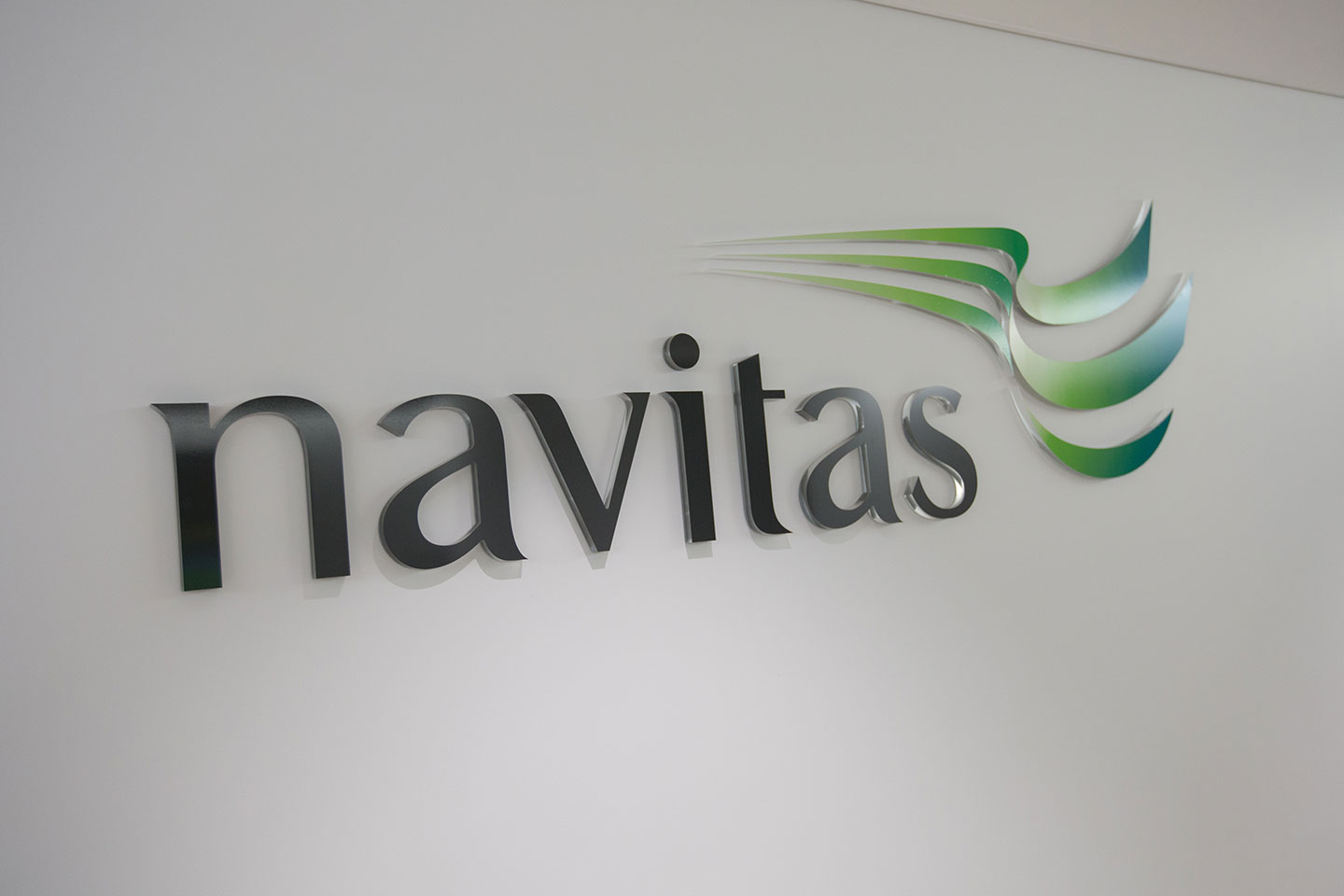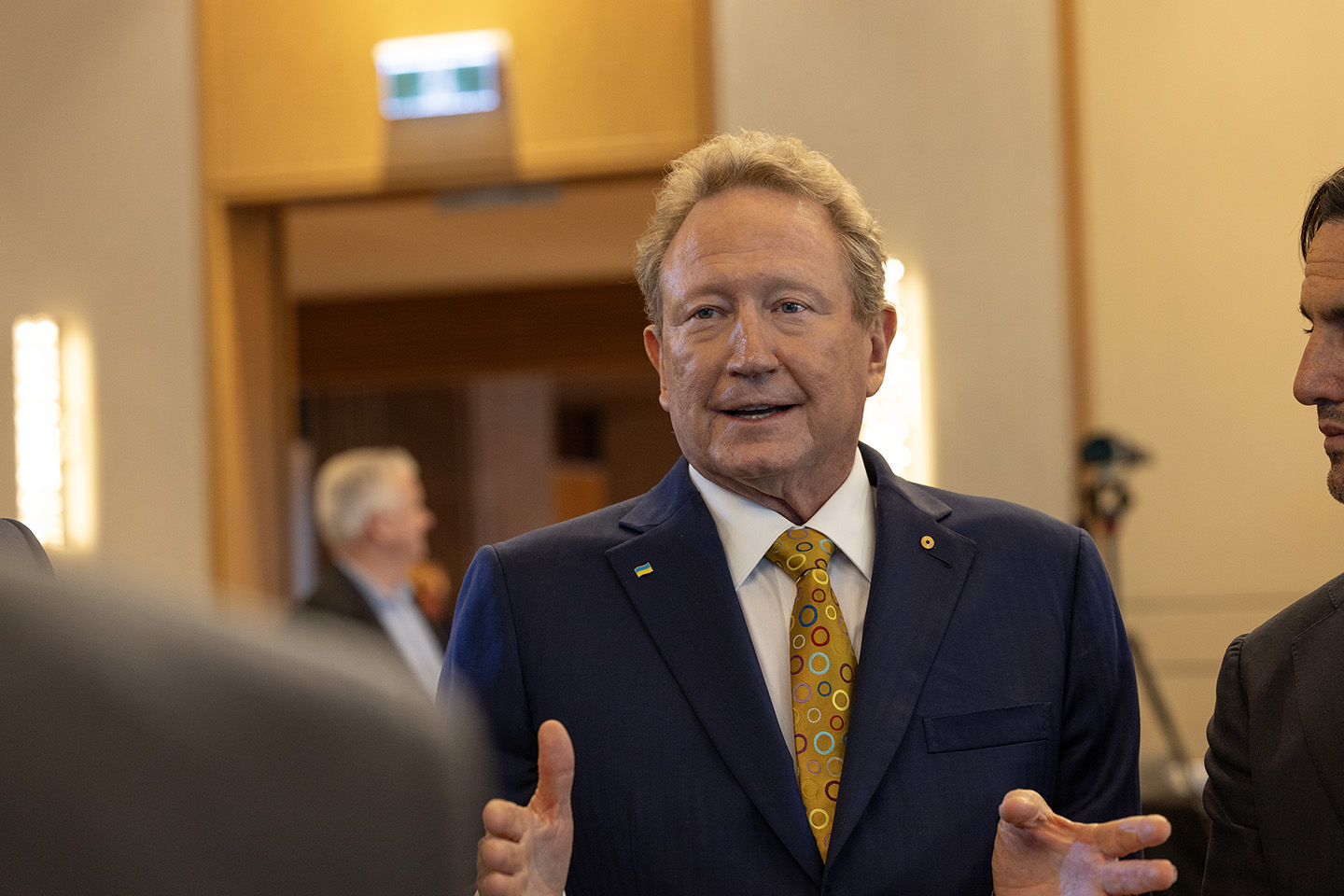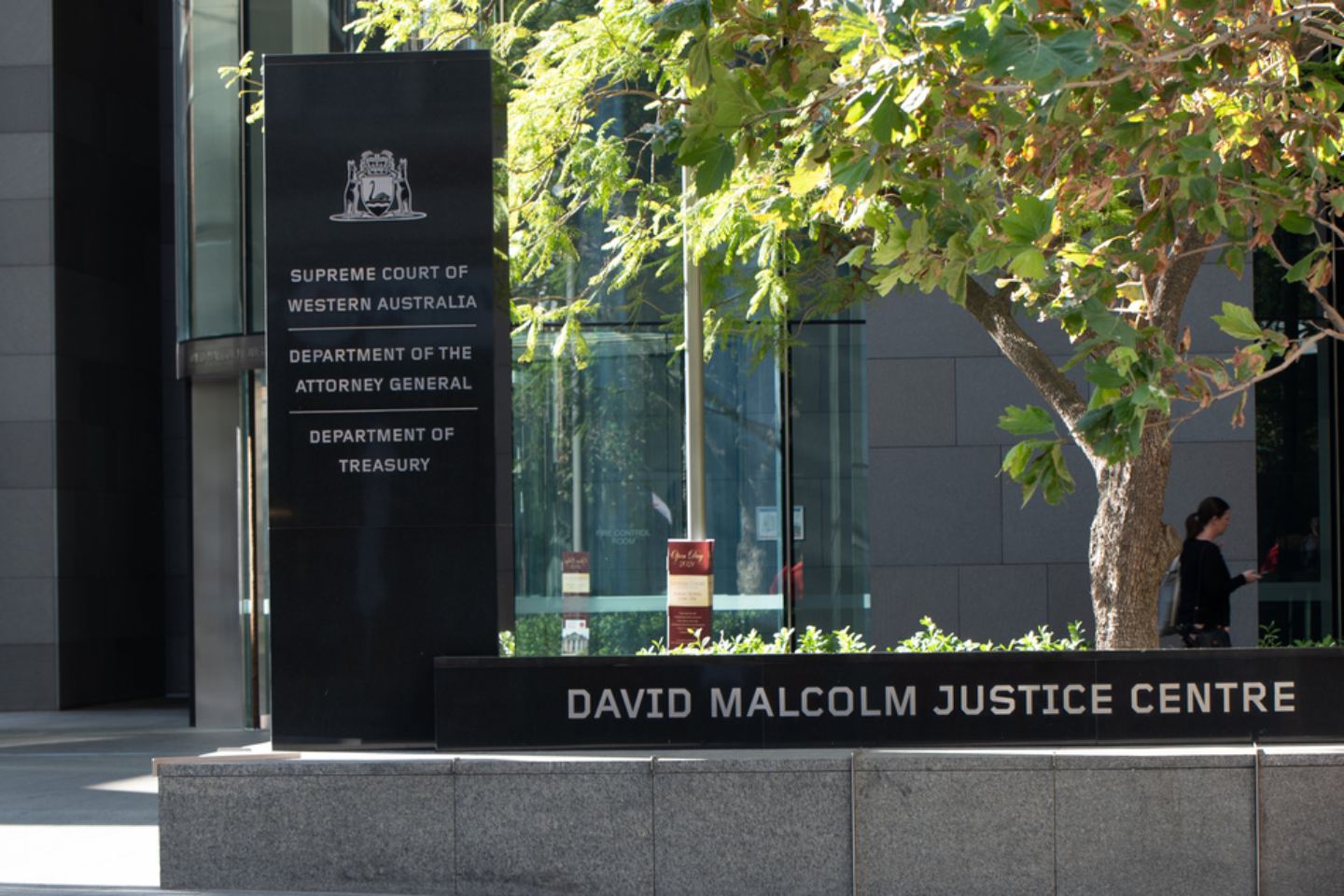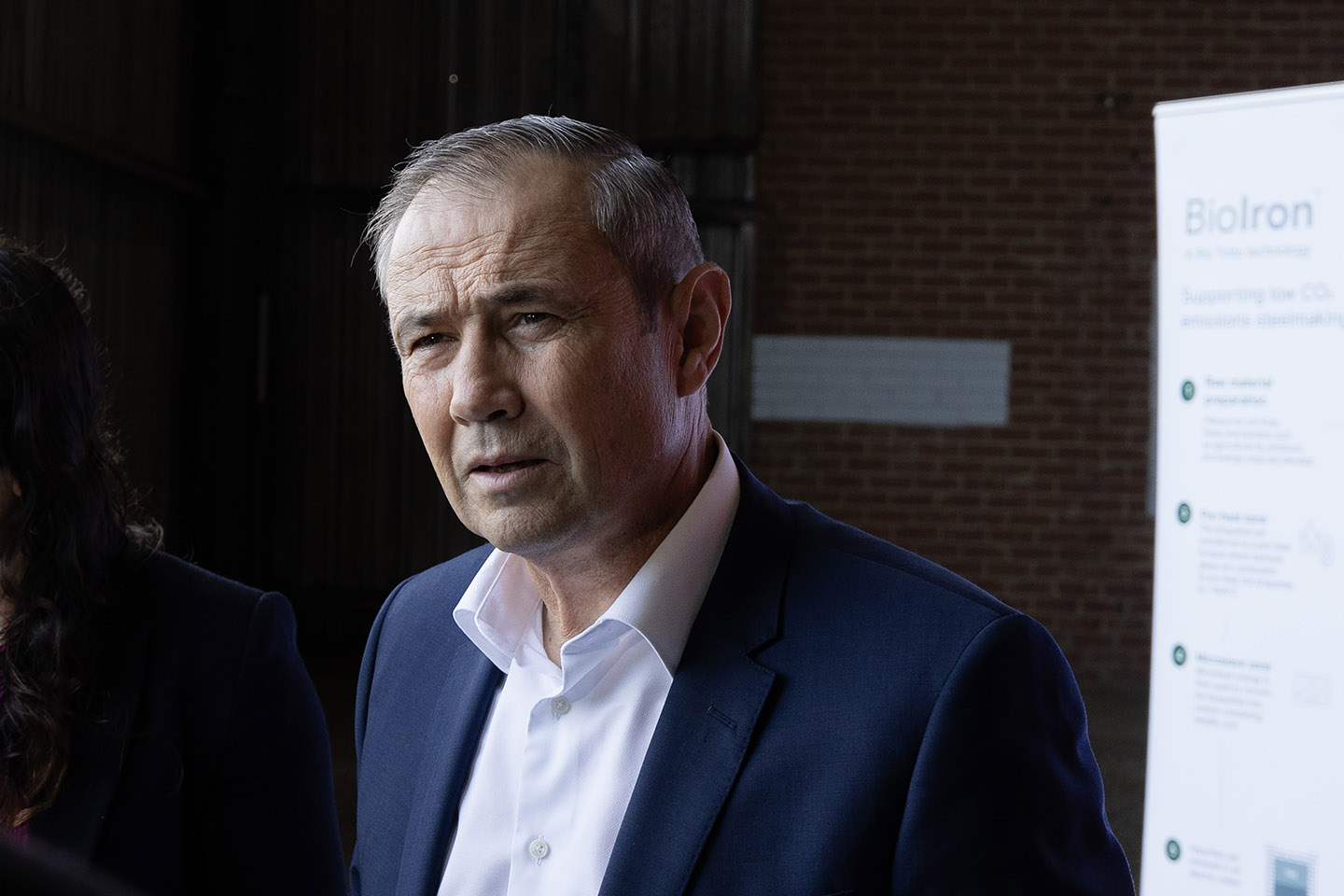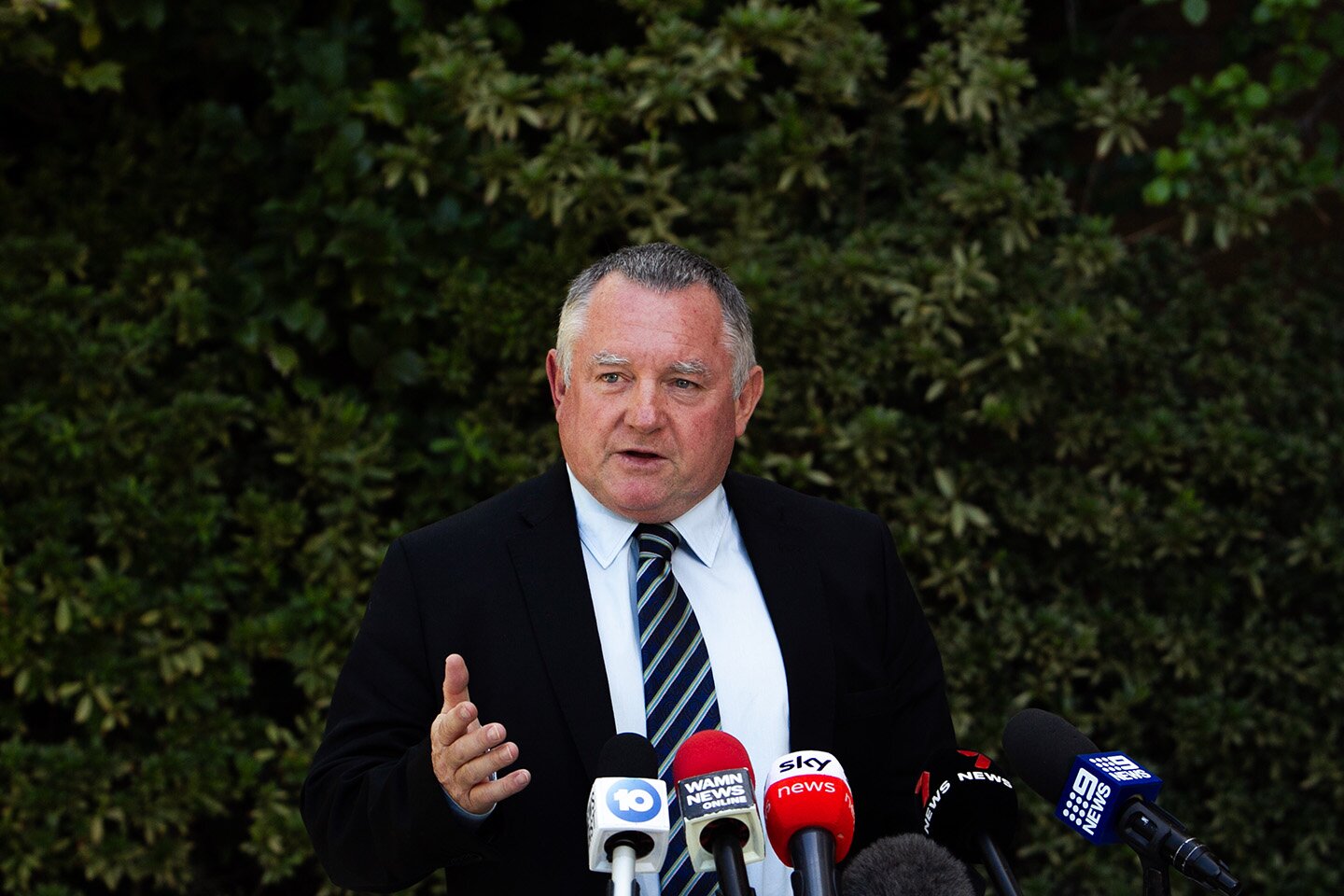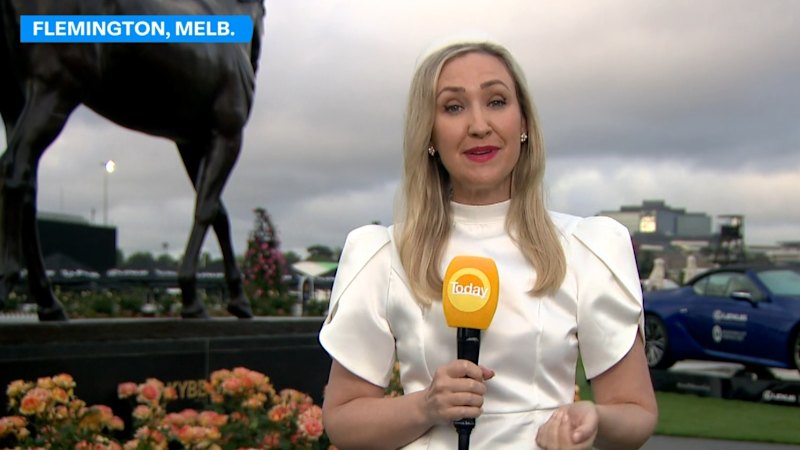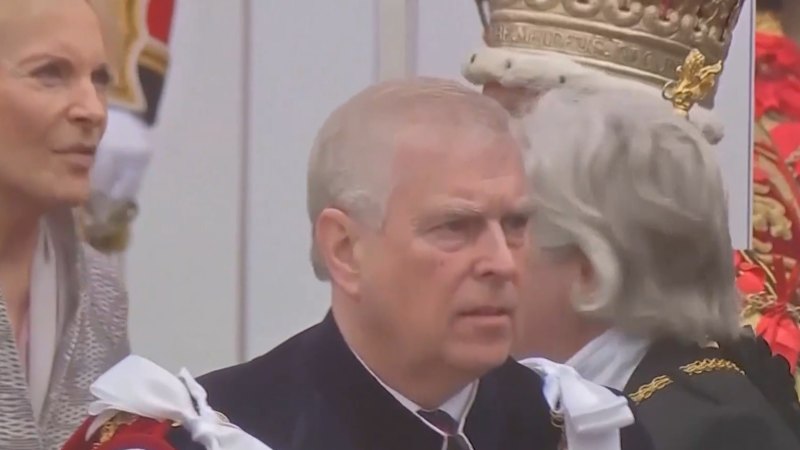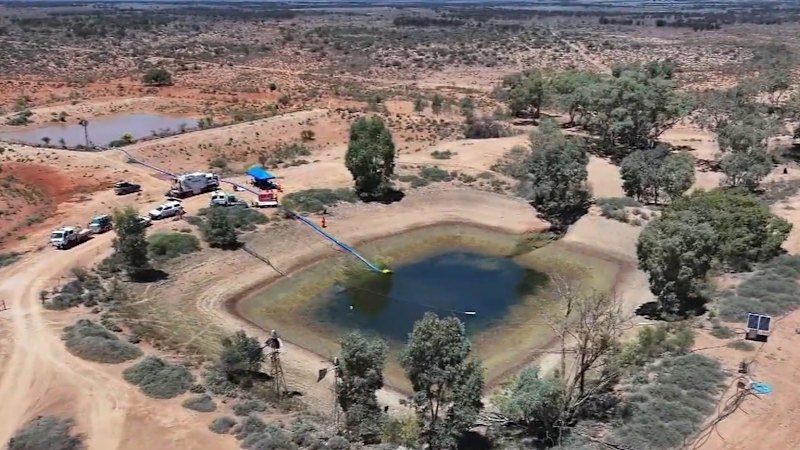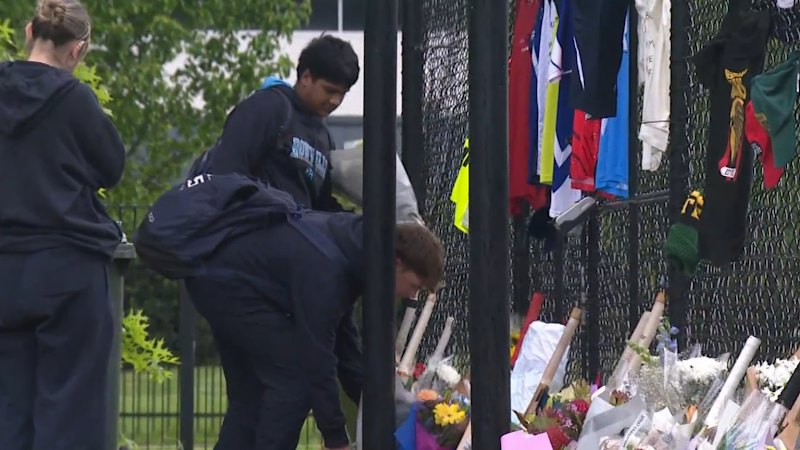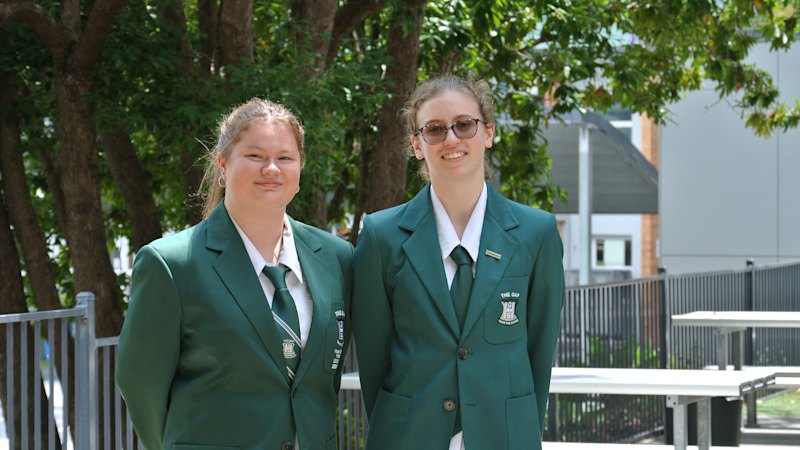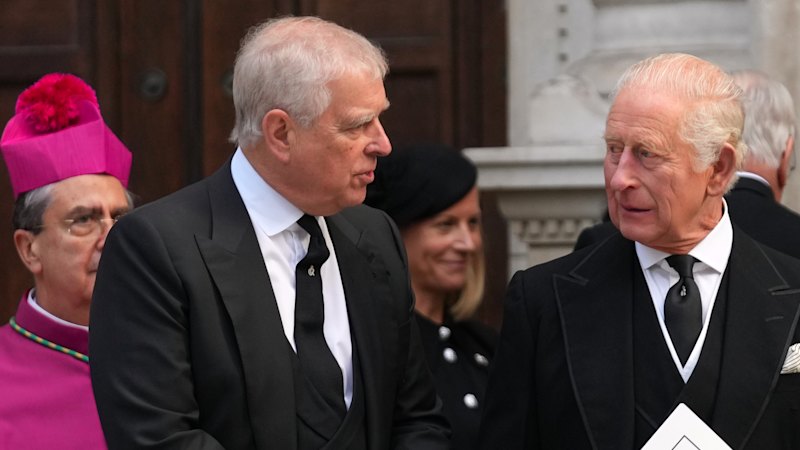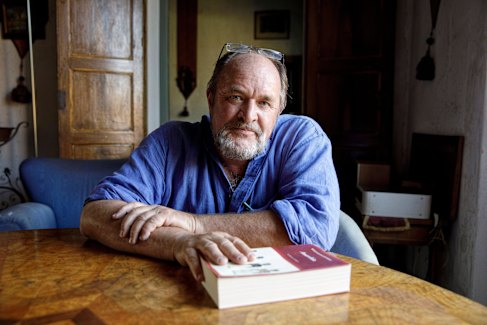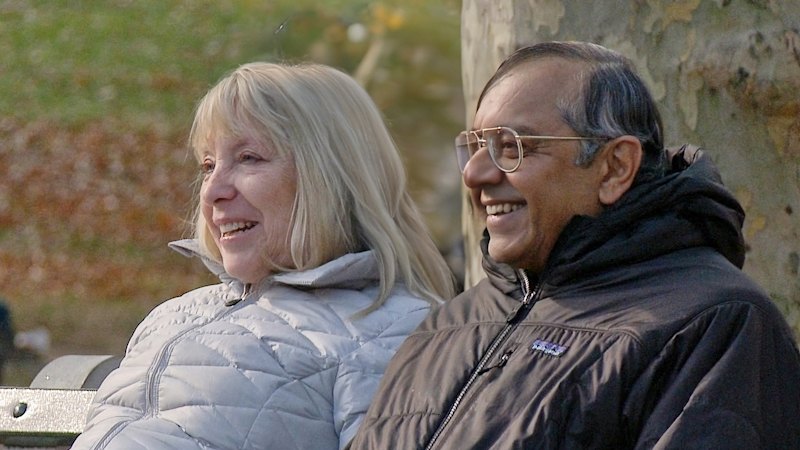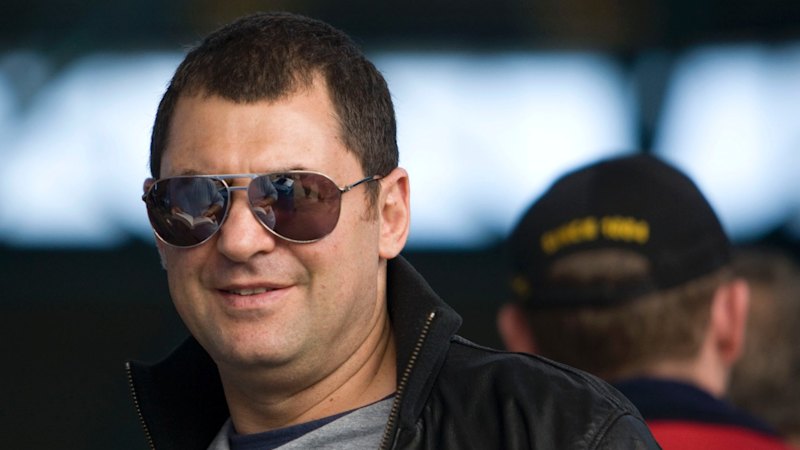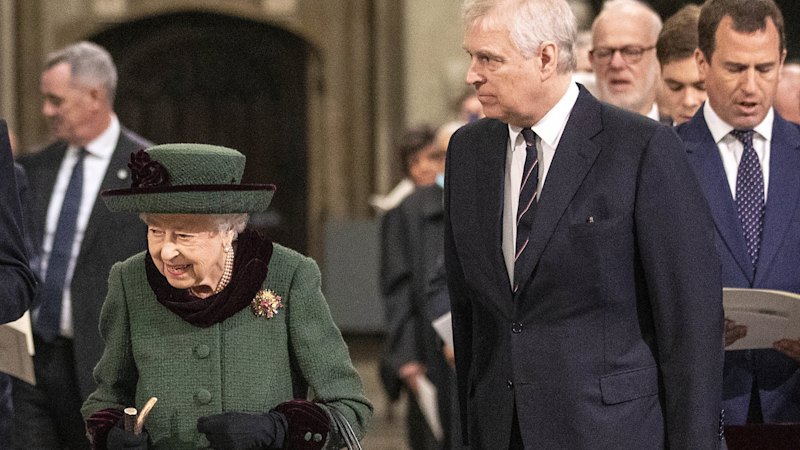Investigative Journalism
Supermarkets and smaller retailers are feeling the pain of the illegal tobacco trade, posting super-sized drops in revenue in recent reporting.
Supermarkets are considering a once-unthinkable move to ditch tobacco from their shelves, as the illegal trade makes stocking cigarettes almost unviable. The immense scale of the loss of legal sales and retailers revenue is clear from financial reports issued this season. Quarterly data posted by Woolworths on Wednesday showed sales down 51 per cent compared with the same three months in 2024, while Coles sold 30 per cent less tobacco across the past financial year. Sales at wholesalers Metcash are down almost half compared with four years ago, a drop of $1.3 billion that now has tobacco representing just 17 per cent of sales. Viva Energy, which operates 1000 petrol stations nationwide, revealed this week sales had plunged 12.5 per cent in the last quarter, blaming the latest set of packaging law changes from the federal government. Sales of tobacco products at major supermarkets have dropped dramatically. (Lukas Coch/AAP PHOTOS) Those changes include new anti-smoking messages both inside and outside packets, coupled with excise hikes which now amount to $1.50 per cigarette stick. Lower sales might be celebrated as a public health success if it weren’t for the soaring underground cut-price tobacco industry. The under-the-counter trade accounts for 39 per cent of sales, according to a consultant’s report prepared for the tobacco industry, showing Australians have no qualms in buying cheaper unregulated product. Some studies – including in Western Australia – are proving what many anti-smoking advocates are feeling to be the case anecdotally, that cheap cigarettes are producing the first rise in smoking rates in a generation. A joint operation by Lake Macquarie Police District and @NSWHealth has resulted in nearly $1 million dollars’ worth of alleged illegal tobacco seized over the last three days. pic.twitter.com/DS90acJHHq — NSW Police Force (@nswpolice) October 23, 2025 Police link the illegal tobacco trade to multinational crime syndicates. Fred Harrison, the chief executive of the IGA-aligned Ritchies supermarket group – including 82 grocery shops and 72 liquor stores across three states – is witnessing the collapse. “We’ve seen over the last four years our tobacco sales decline from $300 million, we’re on track this financial year to hit around $60 million,” he said. “If people have stopped smoking and moved away from tobacco, we’ll wear that on the chin. “However, we know that smoking is dramatically up … and it’s all going to the illicit (trade) and it makes me extremely upset.” Ritchies chief executive Fred Harrison laments the bad guys are killing off legal tobacco sales. (PR IMAGE PHOTO) Mr Harrison – a 50-year veteran of the industry – said he had begun taking cigarettes off his liquor store shelves and would next consider doing so from supermarkets. “We have exited from 25 of our 72 liquor stores … the sales just don’t warrant it when you’ve got $25,000 (in stock) sitting there and you’ve got $300 in sales a week,” he said. “We are going to review a number of supermarkets in the new year. There’s probably six to 10 where we’re saying it shouldn’t be part of our offer. “That’s frustrating when it’s a legal product and you’re sick to death of letting the bad guys win.” Mr Harrison is savage on the Victorian government for not joining other states to legislate specific anti-illicit tobacco laws which target landlords of illegal tobacco sellers, threatening businesses with closure and fines. Melbourne man Yusuf Issam is accused of illegally importing millions of cigarettes. (Joel Carrett/AAP PHOTOS) At the Metcash AGM this year, chief executive Doug Jones also lashed “the effectiveness of the various law enforcement initiatives” as “disappointing to say the least”. IGA stores are also joining the lobbying effort for bigger fines – as NSW and Queensland have legislated – to landlords housing illegal tobacconists. While Ritchies has begun to phase out tobacco, it’s unclear whether the supermarket duopoly will follow. In response to questions from AAP, Woolworths said it was yet to do so, while Coles did not respond.
The Nationals have been urged by their members to abandon a key climate target threatening the coalition - and back a commitment to nuclear power.
Party faithful are urging the Nationals to dump a commitment to net-zero emissions by 2050 and withdraw from a global climate treaty. A federal council meeting will be held in Canberra on Saturday, with the rural party to outline its policy vision. Motions to be debated include bids to scrap the key climate target and withdraw from the Paris climate agreement. The net-zero emissions target remains a key sticking point within the coalition. (Lukas Coch/AAP PHOTOS) They call on the National Party to “abandon its support for a net-zero mandate” while backing a policy framework that allows emissions reductions. This would be done by protecting key industries such as mining, agriculture and manufacturing through a “balanced” energy mix of coal, gas and renewable energy sources. Giving the motion the green light would see the Nationals retain a commitment to nuclear energy and support lifting the nationwide ban on nuclear power introduced in 1998. Adopting the policy would keep the Nationals “opposed to the current punitive industry and job-destroying taxes of the Albanese Labor government”. Under the Paris Agreement, signed in 2015, members must increase their emissions targets every five years and cannot water them down. By stepping away from the agreement, national control would be restored over emissions targets and energy policy by ensuring access to affordable and reliable energy for Australians, the motion reads. The net-zero target has remained a key sticking point within the coalition as the Liberal Party undertakes an energy policy review following the disastrous May election defeat. But its own commitment is in doubt following a meeting of Liberal backbenchers at Parliament House on Friday. The Liberals are still finalising their position, Opposition energy spokesman Dan Tehan says. (Lukas Coch/AAP PHOTOS) Opposition energy spokesman Dan Tehan said the Liberals were likely to finalise their position six to nine months after the federal election, meaning a decision would likely come between November and January. Liberal leader Sussan Ley said the coalition’s energy policy would not simply prioritise an emissions target. “As I have said from the beginning … we’re not going to accept the government’s net zero at any cost,” she said on Friday. Speaking from South Korea, Prime Minister Anthony Albanese said the government was getting on with the transition to net zero unperturbed by coalition ructions. “I’ll allow people to watch that circus and to make their own decisions,” he told reporters.
- Comment & Analysis
- Latest Posts
More than a quarter of the National Press Club’s sponsors are part of the global arms industry or working on its behalf.
More than a quarter of the National Press Club’s sponsors are part of the global arms industry or working on its behalf. Michelle Fahy with the story. The National Press Club of Australia lists 81 corporate sponsors on its website. Of those, ten are multinational weapons manufacturers or military services corporations, and another eleven provide services to the arms industry, including consultants KPMG, Accenture, Deloitte and EY. They include the world’s two biggest weapons makers, Lockheed Martin and Raytheon (RTX); British giant BAE Systems; France’s largest weapons-maker, Thales; and US weapons corporation Leidos – all of which are in the global top 20. BAE Systems, which is the largest contractor to the Department of Defence, received $2B from Australian taxpayers last year. In 2023, those five corporations alone were responsible for almost a quarter of total weapons sales ($973B) by the world’s top 100 weapons companies that year. Last year, UN experts named Lockheed Martin, BAE Systems, RTX (Raytheon) and eight other multinationals in a statement, warning them that they risked being found in violation of international law for their continued supply of weapons, parts, components and ammunition to Israeli forces. The experts called on the corporations to immediately end weapons transfers to Israel. None has done so. Another of the Club’s sponsors, Thales, is being investigated by four countries for widespread criminal activity in three separate corruption probes. In a fourth, long-running corruption case in South Africa, the country’s former president, Jacob Zuma, is now in court, alongside Thales, being tried on 16 charges of racketeering, fraud, corruption and money laundering in connection with arms deals his government did with Thales. Loading... Taking too long? Reload document | Open in new tab Download [1.07 MB] Global expert Andrew Feinstein has documented his extensive research into the arms industry. He told Undue Influence that wherever the arms trade operates, it “increases corruption and undermines democracy, good governance, transparency, and the rule of law, while, ironically, making us less safe”. Undue Influence asked the Press Club’s CEO, Maurice Reilly, what written policies or guidelines were in place that addressed the suitability and selection of corporations proposing to become Press Club sponsors. Mr Reilly responded: “The board are informed monthly about…proposals and have the right to refuse any application.” National Press Club The National Press Club, established by journalists in 1963, is an iconic Australian institution. It is best known for its weekly luncheon addresses, televised on the ABC, covering issues of national importance, after which the speaker is questioned by journalists. The Club’s board has 10 directors led by Tom Connell, political host and reporter at Sky News, who was elected president in February following the resignation of the ABC’s Laura Tingle. The other board members are current and former mainstream media journalists, as well as at least two board members have jobs that involve lobbying. Long-term board member Steve Lewis works as a senior adviser for lobbying firm SEC Newgate, which itself is a Press Club sponsor and also has as clients the Press Club’s two largest sponsors: Westpac and Telstra. SEC Newgate has previously acted for several Press Club sponsors, including Serco (one of the arms industry multinationals listed below), BHP, Macquarie Bank, Tattarang, and Spirits & Cocktails Australia Inc. Gemma Daley joined the board a year ago, having started with Ai Group as its head of media and government affairs four months earlier. Ms Daley had worked for Nationals’ leader David Littleproud, former prime minister Malcolm Turnbull and former treasurer Joe Hockey, and, before that, for media outlets the Financial Review and Bloomberg. Ai Group has a significant defence focus and promotes itself as “the peak national representative body for the Australian defence industry”. The group has established a Defence Council and, in 2017, appointed a former assistant secretary of the Defence Department, Kate Louis, to lead it. The co-chairs of its Defence Council are senior arms industry executives. One of them, Paul Chase, is CEO of Leidos Australia, a Press Club sponsor. Conflicts of interest Undue Influence asked Ms Daley for comment on several aspects related to her position on the board, including whether she has had to declare any conflicts of interest to date. She responded: “Thanks for the inquiry. I have forwarded this through to Maurice Reilly. Have a good day.” Given the potential for conflicts of interest to arise, as happens on any board, Undue Influence had already asked the Press Club CEO what written policies or guidelines existed to ensure the appropriate management of conflicts of interest by board members and staff. Mr Reilly responded: “The Club has a directors’ conflict register which is updated when required. Each meeting, board members and management are asked if they have conflicts of interest with the meeting agenda. We have a standard corporate practice that where a director has a conflict on an agenda item they excuse themselves from the meeting and take no [part] in any discussion or any decision.” MWM is neither alleging nor implying inappropriate or illegal behaviour by anyone named in this article. Investigation: Antisemitism Summit sponsors have links to Israel weapons lobby Selling access While Mr Reilly declined to disclose the Club’s sponsorship arrangements with Westpac and Telstra, citing “commercial in confidence” reasons, The SMH reported earlier this year that Westpac paid $3 million in 2015 to replace NAB as the Press Club’s principal sponsor. The SMH article, “Westpac centre stage at post-budget bash”, on Treasurer Jim Chalmers’ National Press Club address in the Great Hall of Parliament House in late March, added: “(Westpac) … gets more than its money’s worth in terms of access. New-ish chief executive Anthony Miller got the most coveted seat in the house, between Chalmers and Prime Minister Anthony Albanese… Finance Minister Katy Gallagher and Deputy Prime Minister Richard Marles were also on the front tables. “Westpac occupied prime real estate in the Great Hall, with guests on its tables including Treasury Secretary Steven Kennedy, Department of Prime Minister and Cabinet boss Glyn Davis, Attorney-General Mark Dreyfus, Housing Minister Clare O’Neil and Labor national secretary and campaign mastermind Paul Erickson… “Communications Minister Michelle Rowland was on the Telstra table.” Mr Reilly told Undue Influence that all the other corporate sponsors pay $25,000 per year, with a few paying extra as partners in the Club’s journalism awards. The 21 arms industry and related sponsors, therefore, contribute an annual $525,000 to the Press Club’s coffers. This is 23% of the $2.26m revenue it earns from “membership, sponsorship and broadcasting”, the Club’s largest revenue line for the 2024 financial year. “The National Press Club of Australia proudly partners with organisations that share our commitment to quality, independent journalism,” says the Club’s website. Sponsors’ right to speak? In response to Undue Influence’s questions about the Club’s cancellation of a planned address by the internationally acclaimed journalist Chris Hedges, Mr Reilly stated that: “For the avoidance of doubt, sponsors do not receive any rights to speak at the club, nor are they able to influence decisions on speakers.” Sponsors may not be granted a right to speak, but they are sometimes invited to speak, with their status as sponsors not always disclosed to audiences. When the Club’s second largest sponsor, Telstra, spoke on 10 September, both Club president Tom Connell and Telstra CEO Vicki Brady noted the corporation’s longstanding sponsorship. Compare this with two addresses given by $25,000 corporate sponsors – Kurt Campbell (former US deputy secretary of state, now co-founder and chair of The Asia Group), who gave an address on 7 September; and Mike Johnson, CEO of Australian Industry and Defence Network (AIDN), who gave an address on 15 October. Neither the Press Club nor the speakers disclosed the companies’ sponsorship of the Press Club. The Club also promotes additional benefits of corporate sponsorship, including “Brand association with inclusion on our prestigious ‘Corporate Partners’ board and recognition on the National Press Club of Australia website”. The Club also promises corporate sponsors that they will receive “priority seating and brand positioning” at its weekly luncheon addresses. Profiting from genocide In July, Francesca Albanese, UN Special Rapporteur on the situation of human rights in the Palestinian territories, issued a report explaining how the corporate sector had become complicit with the State of Israel in conducting the genocide. Ms Albanese highlighted Lockheed Martin and the F-35 program, which has 1,650 companies worldwide in its supply chain. More than 75 of those companies are Australian. Her report also noted that arms-making multinationals depend on legal, auditing and consulting firms to facilitate export and import transactions to supply Israel with weapons. Client State: Australia the “51st state of the US” for deadly weapons production Four of the world’s largest accounting, audit and consulting firms – all of which have arms industry corporations as clients – are sponsors of the Press Club: KPMG, Accenture, Deloitte and EY. Until recently, PwC counted among them. EY (Ernst & Young) has been Lockheed Martin’s auditor since 1994. EY is also one of two auditors used by Thales, and has been for 22 years. Deloitte has been BAE Systems’ auditor since 2018. PricewaterhouseCoopers (PwC) – a Press Club sponsor until 2024 – has been Raytheon’s auditor since 1947. Lockheed Martin’s supply to Israel of F-16 and F-35 fighter jets and C-130 Hercules transport planes, and their parts and components, along with Hellfire missiles and other munitions, has directly facilitated Israel’s genocide. Raytheon’s (RTX) supply of guided missiles, bombs, and other advanced weaponry and defence systems, like the Iron Dome interceptors, also directly supports Israel’s military capability. In England, BAE Systems builds the rear fuselage of every F-35, with the horizontal and vertical tails and other crucial components manufactured in its UK and Australian facilities. It also supplies the Israeli military with munitions, missile launching kits and armoured vehicles, while BAE technologies are integrated into Israel’s drones and warships. Thales supplies Israel’s military with vital components, including drone transponders. Australian Zomi Frankcom and her World Central Kitchen colleagues were murdered by an Israeli Hermes drone, which contained Thales’ transponders. Yet, echoing Australia, France claims its military exports to Israel are non-lethal. The full version of this story can be found here. Free speech threatened, language weaponised, truth corrupted
Australia’s legal regulators, the ones meant to keep lawyers in check, have turned into a protection racket. In this explosive episode, Michael West exposes how defamation laws and the so-called regulators of the legal profession are failing the public, protecting their own, and leaving ordinary people at risk. After being sued by a law firm tied to government work, Michael reveals how the system allowed conflicts of interest, intimidation, and threats, including threats against his home, to go unpunished. Despite official complaints and documented misconduct, the NSW Bar Association and Law Society refused to act, declaring this behaviour acceptable professional conduct. This isn’t just one case, it’s a window into a broken system where the powerful face no accountability and the rest of us pay the price. 📄 Full story, documents, and evidence on michaelwest.com.au 🧢 Grab our merch: lonelykidsclub.com/collections/michael-west 💪 Support independent journalism: patreon.com/thewestreport Support Us here https://linktr.ee/michaelwestmedia.com.au 00:00 – The Regulators Exposed 04:40 – The Lawsuit 11:00 – Court and Costs 17:50 – The Threat 27:00 – No Accountability
Australia’s legal regulators, the ones meant to keep lawyers in check, have turned into a protection racket. In this explosive episode, Michael West exposes how defamation laws and the so-called regulators of the legal profession are failing the public, protecting their own, and leaving ordinary people at risk. After being sued by a law firm tied to government work, Michael reveals how the system allowed conflicts of interest, intimidation, and threats, including threats against his home, to go unpunished. Despite official complaints and documented misconduct, the NSW Bar Association and Law Society refused to act, declaring this behaviour acceptable professional conduct. This isn’t just one case; it’s a window into a broken system where the powerful face no accountability and the rest of us pay the price. 00:00 – The Regulators Exposed 04:40 – The Lawsuit 11:00 – Court and Costs 17:50 – The Threat 27:00 – No Accountability
The work put into a critical minerals deal with the US makes it easier for Australia to sell more resources to other countries in need, the prime minster says.
Australia has what others want and is prepared to do deals on critical minerals with more than just the US, Anthony Albanese says. The prime minister also had another “informal” meeting with Xi Jinping, although he would not confirm whether defence tensions were raised with the Chinese president. Leveraging Australia’s massive reserves of critical minerals and rare earths into deals with more countries in the region was one of Mr Albanese’s goals at the Asia-Pacific Economic Cooperation summit in South Korea. Anthony Albanese hasn’t revealed what he discussed with China’s President Xi Jinping. (Lukas Coch/AAP PHOTOS) Having signed a landmark $8.5 billion deal with US President Donald Trump last week, the prime minister wants to keep up the mineral momentum to boost the domestic economy. “What we did with the United States was a framework,” Mr Albanese said on Friday. “Australia has these products, critical minerals and rare earths that are in demand around the world. “We see this as … not just an opportunity between Australia and the United States, this is an opportunity for Australian jobs and Australian economic growth.” While confirming he did meet with President Xi, Mr Albanese would not divulge whether diplomatic incidents in the South China Sea were mentioned after they were raised in talks with Premier Li Qiang earlier in the week. Good to meet informally with President Xi at the APEC Summit in South Korea today. 🇦🇺🇨🇳 pic.twitter.com/MU3fL3AmHi — Anthony Albanese (@AlboMP) October 31, 2025 “I don’t go out of private discussions and come in here and discuss them, because that way you won’t have diplomatic advancement,” the prime minister told reporters. “It was an informal discussion with President Xi.” Mr Albanese also would not be drawn on the controversy swirling around Australia’s head of state and whether the King made the right decision to strip Prince Andrew of his royal titles. “I think His Majesty King Charles can make decisions without the benefit of my advice,” he said.
Earnings from Amazon, Apple lift Nasdaq by 1.2 per cent; Nikkei heads for 15 per cent monthly gain, South Korea stocks up 20 per cent; Chinese shares down.
Asian shares are set for a seventh consecutive month of gains on Friday, after upbeat earnings from Amazon and Apple buoyed Wall Street futures and the dollar hovered near three-month highs on uncertainty over further Federal Reserve rate cuts. Nasdaq futures jumped 1.2 per cent and S&P 500 futures gained 0.6 per cent as Amazon’s stellar earnings sent its shares up a staggering 13 per cent after the bell, which added more than $US300 billion ($A458 billion) to its market value. Apple also rose 2.3 per cent after its outlook on iPhone sales topped estimates. That offset the drag from Meta and Microsoft overnight amid worries over their surging AI spending. Six of the “Magnificent Seven” US tech megacaps have now reported and the results have been mixed. Nvidia, the world’s first $US5 ($A7.6) trillion company, is due to report in three weeks. “Things have gone in reverse, or at least slightly retraced, with earnings this morning from Apple and Amazon … improving sentiment going into Asian trade,” said Kyle Rodda, a senior analyst at Capital.com. “The markets round out the week on still uncertain footing, although the big events of the week are now in the rear view mirror. The report card … isn’t categorically positive but it isn’t all that bad either.” MSCI’s broadest index of Asia-Pacific shares outside Japan rose 0.2 per cent on Friday, as gains elsewhere were offset by losses in Chinese stocks. The index was poised for a weekly gain of 1.8 per cent and a monthly rise of 4.7 per cent. Japan’s Nikkei rallied 1.1 per cent on Friday, adding to its weekly and monthly gains to 5.2 per cent and 15.5 per cent, respectively. Chinese stocks lagged after a dismal reading on China’s factory activity in October weighed on sentiment. The official purchasing managers’ index (PMI) dropped to a six-month low of 49, well below the forecast 49.6. Chinese blue chips fell 0.4 per cent and Hong Kong’s Hang Seng index slipped 0.3 per cent. The much-anticipated summit between US President Donald Trump and Chinese President Xi Jinping led to reduced US tariffs on Chinese goods, resumed US soybean purchases by Beijing and continued rare earth exports from China. However, market reactions have been fairly muted as the meeting was viewed as just a tactical truce, rather than a major reset in bilateral relations. This week, major central bank meetings have delivered decisions that are largely in line with expectations, with the biggest surprise coming from Federal Reserve Chair Jerome Powell who pushed back against the market’s sanguine view about a rate cut in December. Treasuries were steady on Friday, but were set for weekly losses. Two-year Treasury yields were flat at 3.6021 per cent, having risen 12 basis points this week already, while the 10-year yield was steady at 4.0931 per cent and up 10 bps for the week. The rise in yields offered support to the US dollar , which was holding near three-month highs at 99.459 against its major peers, although resistance seems heavy at 99.564 and 100.25. The euro was last 0.1 per cent firmer at $US1.1572 ($A1.7650) after the European Central Bank kept interest rates unchanged at 2.0 per cent for the third meeting in a row on Thursday and repeated that policy was in a “good place” as economic risks recede. Oil prices slipped and were headed for a third straight month of declines as a stronger dollar capped commodities gains and rising supply from major producers offset the impact of Western sanctions on Russian exports. Brent crude futures slipped 0.5 per cent to $US64.67 ($A98.63) a barrel, while US West Texas Intermediate crude was at $US60.22 ($A91.85) a barrel, down 0.6 per cent. Spot gold prices held a 2.4 per cent overnight gain at $US4,033.48 ($A6,151.88) per ounce but were still down almost 2.0 per cent for the week and well below its record high of $US4,381 ($A6,682) hit just last week.
- Comment & Analysis
- Latest Posts
A new Zionist healthcare lobby is preparing a class action against Australian health regulators over “vexatious antisemitic/antizionist complaints” against Zionist doctors
A new Zionist healthcare lobby is preparing a class action against Australian health regulators over “vexatious antisemitic/antizionist complaints” against Zionist doctors. Wendy Bacon and Stephanie Tran report. The Israel lobby has formed a new Zionist group, which joins Israellycool, @Notmydoctor48, and @physiciansagainstantisemitism2 to oppose healthcare professionals in Australia who express concerns over Israel’s aggression against doctors and others in Gaza. Doctors who have publicly opposed Israel’s ongoing genocide in Gaza say the move is deeply hypocritical: the same network has spent the past two years orchestrating coordinated campaigns to silence pro-Palestinian voices in medicine. The campaigns often involve encouraging members of the public to lodge vexatious complaints against doctors who express solidarity with Palestinians. The Australian Zionist Healthcare Alliance (AZHA) announced the planned class action last week, targeting the Australian Health Practitioner Regulation Agency (AHPRA), the Health Care Complaints Commission (HCCC), and national health boards. The AZHA are currently in the process of collating complaints made against healthcare workers for “being Jewish/Zionist or supporting Jews and/or Israel” and intends to use these complaints as the basis of their class action. AZHA describes itself as “Australia’s first dedicated Zionist healthcare advocacy organisation”. It was quietly registered in August 2025 as an incorporated association and officially launched on 10 October. AZHA is led by Dr Karen Fink (president) and Dr Deborah Bell (vice-president), and public officer Sharon Stoliar. Dr Fink and Dr Bell are both part of the Alliance Against Antisemitism in Healthcare, the organisation that laid a complaint against Professor Peter Macdonald in early October. Antisemitism? St Vincent’s heartless treatment of cardiologist who asked a question During the 2025 Federal Election campaign, Stoliar campaigned with the Minority Impact Coalition, which was supported by right-wing group Advance Australia. Stoliar has said that she became frustrated when her complaints against health workers chanting “From the River to the Sea” were not accepted as ‘genocidal’. This week, she has been promoting Israel’s International Medical Aliyah program to ease the way for Australian doctors to migrate to Israel. Earlier this month, after being lobbied by AZHA, Senator Andrew Bragg questioned AHPRA in Senate Estimates about antisemitism complaints they received. A pattern: identify, dox, report Multiple pro-Israel platforms, including Israellycool, @Notmydoctor48, and @physiciansagainstantisemitism2, have published names, workplaces, photos, and social media posts of Australian doctors expressing concern about the destruction of hospitals and targeting of healthcare workers in Gaza. Members of the public are urged to ‘report’ these clinicians to AHPRA and make complaints to their employers. General practitioner Dr Akil Islam became the subject of multiple articles on Israel-based website Israellycool after posting about Gaza on LinkedIn and speaking at community rallies. “They set up this site so that at the click of a button, people could report me to AHPRA,” he told MWM. People also contacted my workplace asking for me to be fired. The article was promoted on the Israellycool Instagram page with the caption “Please join me in reporting Dr Islam to the @ahpra_nationalboards”. The eSafety Commissioner issued a notice to Israellycool, finding that the webpage constituted “cyberabuse material” and “the Material would appear to be designed to encourage those who follow and agree with the views of the person responsible to harass the complainant by contacting their workplace and the Australian Health Practitioner Regulation Agency”. Instead of removing the material, the website published a further three articles on Dr Islam. The website’s author then collaborated with Avi Yemini, a far-right Australian-Israeli commentator, to produce a YouTube video ridiculing the eSafety Commissioner’s notice. After multiple complaints were made against Dr Islam, he received a call from AHPRA informing him that an investigation had been commenced. Dr Islam says he was not informed of the substance or source of the complaint. “I wasn’t allowed to know who made the complaint, what the complaint contained, what material the complaint was based on, except for the fact that APHRA took issue with me saying, ‘from the river to the sea Palestine will be free,’ which is not in breach of anything.” “When they did give me the formal complaint letter, the due date for response was prior to the date the letter was created – so it’s just a complete shambles.” When Dr Islam contacted his medical indemnity insurer, they told him hundreds of similar complaints had been lodged nationwide, so many that, additional staff were hired to process them. “When I contacted my medical indemnity insurance, they informed me that there were hundreds of complaints like this. They told me that they had to recruit more people because of these complaints, and basically nobody has had any findings made against them from these investigations,” he said. Dr Islam was eventually cleared. He noted that the opaque and prolonged process had chilling effects. “The AHPRA complaint eventually fizzled out, and they exonerated me. It was a baseless complaint, but it’s a method of intimidation to silence doctors who don’t want the impunity of Israel to continue.” Palestinian-Australian doctor, Dr Adrian Conner, says he also faced an AHPRA complaint after organising a fundraiser for Palestinian medical aid supported by his hospital. “My hospital received a complaint after a PANZMA (Palestinian Australian New Zealand Medical Association) fundraiser we did. We raised about $40,000 from the local community, and the local newspaper did a small piece about it,” he said. The fundraiser was referenced in the complaint – they said I was spreading antisemitism in the community. After a few months, the complaint against Dr Conner dissolved. “The complaint just seemed to disappear. I still have no idea what’s going on with it.” Intimidation tactics Dr Conner says these vexatious complaints are part of a broader pattern in which professional reporting mechanisms are leveraged to intimidate healthcare workers who speak publicly about Gaza. “The underlying motive of vexatious anti-semitism complaints is to silence healthcare workers. This is an apparatus of genocide which has been presented to the UN on multiple occasions, including by Dr Abu Sittah.” It is imperative to the Zionist project that dehumanisation of Palestinians is maintained. “Ultimately the underlying issue is AHPRA has been hijacked to perform the bidding of racist individuals and organisations instead of focusing on patient safety.” Dr Conner says racism has intensified within the healthcare sector. “We know through multiple surveys that Islamophobic and anti-Palestinian racism is going up in our workplaces. In the last few years, I have heard ‘all Palestinians are terrorists’, ‘Palestinians use their kids as human shields’ and ‘Palestinian men are starving the children in Gaza’. It is extremely difficult to offer dignified responses to such dehumanising rhetoric. Especially when some colleagues choose to shamelessly express debunked Israeli propaganda over reports from the UN, humanitarian aid organisations, as well as countless testimonies from international aid workers, including Australian doctors.” Regulatory bodies deny bias AHPRA told MWM it had received 209 notifications against 101 practitioners between October 2023 and October 2025 relating to antisemitism and Islamophobia. According to AHPRA, “around half of those relate to a complaint about antisemitism, another half were about Islamophobia.” Of these complaints, 190 have been closed and “two practitioners have been referred to the relevant tribunal for alleged professional misconduct”. “Practitioners will not be investigated solely for expressing personal views online – including advocating for the protection of healthcare workers, civilians, or infrastructure,” AHPRA said. “All notifications to AHPRA about the Gaza conflict are managed within a single specialist team consisting of appropriately trained staff to manage these types of notifications in an appropriate, humane and efficient way.” A spokesperson for the Health Care Complaints Commission said it had systems to “identify and manage complaints that appear repetitive, malicious or made without genuine intent to raise legitimate concerns” and close them promptly. AZHA did not respond to a request for comment. Gaza ‘Medicide’ At least 1,722 healthcare workers have been killed in Gaza during the two years of Israel’s genocide. More than 300 healthcare workers have been detained, with some experiencing torture at the hands of Israeli authorities. Doctors have also been deliberately targeted and murdered by the Israeli military. Among the most high-profile cases was the killing of Dr Marwan al-Sultan, director of Gaza’s Indonesian Hospital and one of Gaza’s most senior physicians. In July 2025, an Israeli missile struck the apartment where he was staying with his family. His wife, daughter, sister and son-in-law were also killed in the attack. In August 2025, a panel of United Nations experts warned that Israeli forces were carrying out what they called “medicide” through the systematic destruction of Gaza’s ability to deliver healthcare. “In addition to bearing witness to an ongoing genocide, we are also bearing witness to a ‘medicide’, a sinister component of the intentional creation of conditions calculated to destroy Palestinians in Gaza,” the experts said. Health and care workers have been continuously targeted, detained, tortured and are now, like the rest of the population, being starved. The experts described deliberate strikes on medical workers and facilities as gross violations of international humanitarian law. The World Health Organization has repeatedly warned that Gaza’s health system has been pushed to breaking point. By May 2025, at least 94% of all hospitals in the territory were damaged or destroyed. “The destruction is systematic. Hospitals are rehabilitated and resupplied, only to be exposed to hostilities or attacked again. This destructive cycle must end,” the WHO warned. Medical colleges fail to support doctors The targeting of healthcare workers who speak out against the human rights violations perpetrated by the Israeli government is a deliberate strategy, says Dr Islam. “There’s a clear pattern here. It’s been acknowledged in the UK and the US that pro-Israel lobby groups are specifically targeting outspoken Western health professionals who are presenting the evidence of human rights violations against Palestinians in Gaza. It’s a strategic and widespread tactic to intimidate doctors around the country and continue the impunity of Israel.” “It would be only appropriate for such an organised strategy to be condemned and rooted out by the organisations that represent medical professionals.” Dr Conner and Dr Islam met with representatives of the Royal Australian College of General Practitioners (RACGP) and the Australian College of Rural and Remote Medicine (ACRRM) to raise concerns about a pattern of vexatious complaints being filed against pro-Palestinian doctors. The doctors presented evidence showing that the complaints coincided with public statements condemning Israel’s assault on Gaza, statements that were consistent with the consensus of leading medical journals, including The Lancet and The British Medical Journal, which have documented grave human rights violations against healthcare workers and patients in Gaza. Yet, the colleges failed to take meaningful action on the issue. “You feel like you’re living in two different worlds. You’re constantly reminded by social media of the horror of the genocide in Gaza every day, but when you try to reach out to your representative body to advocate for human rights, you’re met with complete silence,” said Dr Islam. “The worst thing about this is feeling that your senior colleagues are prepared to accept the cheapness of Palestinian life and are not willing to uphold values that you felt everyone held as members of the Australian medical fraternity.” The RACGP said it planned to raise the issue of vexatious complaints with AHPRA at its next meeting. The ACRRM did not provide a comment. Heartless. Victor Chang Cardiac Institute and the Israel lobby
Treasurer Jim Chalmers has unveiled more changes to the nation's foreign investment review scheme in a bid to boost capital inflows to Australia.
Foreign entities will have access to automatic approvals for low-risk investments under a new proposal as the government looks to increase overseas capital flowing into Australia. Treasurer Jim Chalmers will on Friday reveal a second tranche of reforms to the nation’s foreign investment review scheme at a speech in Sydney. The government has already introduced changes to the way foreign investments are determined by the Foreign Investment Review Board, including streamlined assessments for investors with a proven track record and more resources for the board. “Our vision is for Australia to be the destination where global investment flows first and grows fastest,” Dr Chalmers will tell investors at the Citi A50 Australian Economic Forum. Jim Chalmers wants to make the Foreign Investment Review Board regime “stronger and faster”. (Lukas Coch/AAP PHOTOS) “When you reconsider and redeploy the capital you manage, our objective is for Australia to be the most obvious and most compelling place to put it to work.” Boosting foreign investment is seen as a key way to fix Australia’s ailing productivity performance, which has fallen in the past decades in line with lower investment in capital such as tools and manufacturing equipment. Dr Chalmers has previously called for more investment to boost capital deepening – increasing the amount of equipment available to each worker – which he called one of the big challenges to productivity. Following its economic reform roundtable in August, the government has begun rolling back red tape, put in place an Investor Front Door pilot and begun consultation on changing the super performance test to encourage extra investment. “We’re open to going further, which is why I’m releasing a new consultation paper for a second tranche of foreign investment reforms today,” Dr Chalmers will say. “Our goal is a FIRB regime that is much stronger where risks are high, and much faster where risks are low.” Boosting foreign investment is seen as a key way to fix Australia’s ailing productivity performance (Dan Peled/AAP PHOTOS) The government will consult on a new automatic approvals process that would allow low-risk actions from trusted investors to require notification but not sign-off. The FIRB would retain the power to review cases and call them in if needed. Additional measures include reducing reporting requirements, better managing approved investments and making sure more decisions are made by the statutory deadline. “We’re also looking to tighten our scrutiny of investments in sensitive sectors, strengthen enforcement powers and ensure non-compliance is penalised,” Dr Chalmers will say. “And we’ll be consulting on a new enforceable undertakings power and conditions to make sure investment is in the national interest. “This will make the FIRB regime stronger and faster.”
The financial cost of the gender pay gap accelerates across a woman's lifetime and peaks in her late 50s, with an eye-watering amount of missed earnings.
The gender pay gap accelerates across a woman’s working life, peaking in her late-50s and leaving female workers millions of dollars short of men over their careers. Women entering the workforce in their late teens earn slightly more than men – $376 on average equalling a gender pay gap of two per cent in favour of women – a Workplace Gender Equality Agency (WGEA) report has found. But between 20 to 24 years, the gender pay gap switches to 1.1 per cent in favour of men and then rises significantly to a peak of 31.4 per cent between the ages of 55 and 59. This is equivalent to a difference of nearly $53,000 between the average total remuneration of women and men. The gender pay gap is leaving women on vastly different career earnings paths to men. (Bianca De Marchi/AAP PHOTOS) The report – Ages and Wages – used information reported by more than 7000 employers to WGEA in 2024 and represents the experience of more than 5.1 million employees in 19 industries across Australia. It is the first time WGEA has produced the report, which identified a key turning point for female employees occurs around 30, when the gender pay gap rapidly accelerates. This is driven by a lack of availability of part-time manager roles as well as bonus and overtime systems that favour men. Women would continue to experience a dramatic lifetime financial impact if further action was not taken to address fairness at work, WGEA chief executive Mary Wooldridge said. Employers are central to helping close the pay gap for women, Mary Wooldridge says. (Mick Tsikas/AAP PHOTOS) “Our report shows how key employer interventions at critical times could reduce the gender pay gap and improve women’s ability to earn and save for retirement,” she said. “It also provides insight into how those same actions can help address men’s concerns including lack of flexibility, long-hours work culture and fair and equal access to parental leave.” The cumulative financial impact, adding the earnings difference for every age from 15 to 67, women earn, on average, about $1.5 million less than men. “We’re asking employers to change the story and shape the future,” Ms Wooldridge said. “Closing the gender pay gap enhances women’s capacity to invest for their retirement, provide for their family, afford housing and have financial independence.”
The death of a young cricketer after an accident in the nets has sent shockwaves through Australia's cricket community as his friends grapple with the tragedy.
Clutching flowers instead of bats and bags, dozens of heartbroken young cricketers arrived at a suburban ground to pay tribute to their teammate who never came home. The tragic scene unfolded after Ben Austin, 17, was struck by a ball while practising in the nets on Tuesday afternoon in Ferntree Gully in Melbourne’s east. His teammates rushed to help before paramedics transported him to hospital in a critical condition, where he died on Thursday morning. Within hours, dozens of flower bouquets, sweet treats and a handful of cricket bats left by grieving friends had turned into a memorial for the teen. A friend told AAP he understood Ben was wearing a helmet at the time of the accident and the bowler was using a “wanger” – a plastic instrument used to sling a ball. Devastated young people sat nearby discussing the tragedy, while a woman placed a helmet on her head and demonstrated where the ball had hit his neck. Friend and teammate Liam Vertigan said Ferntree Gully Cricket Club was in a state of shock over the death of such an energetic young man. “He lived and breathed his cricket,” Mr Vertigan told AAP. “He was just well loved by us all, very, very polite, always with a smile on his face.” Grieving friends and community members have left flowers and cricket bats at the training facility. (James Ross/AAP PHOTOS) Ben’s father Jace revealed a teammate was bowling in the nets at the time, describing what happened as an accident that impacted two young men. Mr Austin said he and his wife Tracey were devastated and would forever cherish their son. “Ben was an adored son, deeply loved brother to Cooper and Zach and a shining light in the lives of our family and friends,” he said in a statement. “This tragedy has taken Ben from us, but we find some comfort that he was doing something he did for so many summers – going down to the nets with mates to play cricket.” Cricket Australia chief executive Mike Baird said the cricket world would come together to support the club and the Austin family. Ben was involved in multiple football and cricket clubs, while earlier this year he received an award recognising him as a player who demonstrated dedication and the right attitude. Australian cricketing great Merv Hughes said the young athlete’s death had been felt far beyond his community. “It doesn’t matter what level of cricket you play, there’s always a chance that something like this happens,” he told reporters on Thursday. “Right across Australia and throughout the world, no doubt people will be thinking of him.” The use of helmets and neck guards is mandated across all Cricket Australia-sanctioned competitions but only “strongly recommended” at the community level. “I don’t want to sound dismissive at all – it’s just tragic – but probably the records show there’s more chance of being hit by lightning than there is of dying through an incident at cricket,” Hughes said. “So let’s not be too hasty in judging what should and shouldn’t be done.” The accident came more than a decade after the death of Test cricketer Phillip Hughes, who was struck in the neck with a ball while batting in a Sheffield Shield game at the Sydney Cricket Ground. Phillip Hughes’ family were among those sending condolences to Ben’s loved ones, expressing hope that they would be comforted by cherished memories of the teenager.
Environment advocates and industry groups are critical of elements of the federal government's proposed fixes to broken nature protection laws.
Conservation groups are warning Labor’s latest attempt to refresh nature protections will fail to protect the environment from climate change and other threats. Federal Environment Minister Murray Watt on Thursday introduced to parliament 1500 pages of changes to the laws protecting threatened species, ecosystems and other matters of national significance. Environmental groups have welcomed some aspects of the bill, including the commitment to protection standards, but argue the package is not strong enough to protect nature. “Weak laws will put more valuable forests under a bulldozer, pollution into the atmosphere and destroy Australia’s natural wealth,” Australian Conservation Foundation acting chief executive officer Paul Sinclair said. Environment Minister Murray Watt has introduced 1500 pages of environmental protection reforms. (Lukas Coch/AAP PHOTOS) “They’re not good enough.” The package does not include a “climate trigger” to stop coal and gas projects, a mechanism ruled out by Senator Watt, who says the safeguard mechanism already curbs the emissions of Australia’s biggest polluters. Environmental Defenders Office managing lawyer Revel Pointon said the failure to assess the climate impacts of projects runs counter to international law as laid out in a recent advisory opinion from the World Court. In the landmark opinion from the International Court of Justice delivered earlier in 2025, the judges specified fossil fuel production could constitute an “internationally wrongful act”. “Requiring only partial disclosure of greenhouse gas emissions – and not assessing them – is not environmental protection,” Ms Pointon said. “It’s a free pass for fossil fuel expansion.” Under the reforms, major emitting project proponents will need to disclose estimates of scope one and two greenhouse gas emissions. The reform package doesn’t include a “climate trigger” to stop coal and gas projects. (Julian Smith/AAP PHOTOS) Industry have welcomed efforts to streamline approvals and remove duplication but have taken issue with some elements of the reforms. Business Council of Australia chief executive Bran Black called for an “appropriately focused” Environmental Protection Agency and the timely accreditation of states and territories to start delivering assessments and approvals to new federal standards. “Without reforms that strike the right balance, we won’t get the homes, the renewable energy or the critical minerals projects that are vital to Australia’s future prosperity,” he said. Project approval timelines have blown out by 70 weeks since nature laws were first introduced 25 years ago, Department of Climate Change, Energy, the Environment and Water analysis suggests. Labor has been rushing to pass legislation before the end of 2025. The timeline could be in trouble, however, with either the Greens or the coalition needed to pass the laws but both unhappy with the package as it stands. Greens leader Larissa Waters described it as “gift-wrapped for big business”, while opposition environment spokeswoman Angie Bell was not convinced the changes would give certainty to business.
Retail crime is worsening with a drastic number of Bunnings and Kmart workers threatened with violence every month, parent company Wesfarmers says.
Retail workers at Bunnings and Kmart are being threatened by customers more than 1000 times a month, with many incidents involving weapons. Parent company Wesfarmers, which also owns Target and Priceline Pharmacy, has revealed the extent of worsening rates of retail crime. Incidents involving threats of serious harm at Bunnings rose by 66 per cent while threatening incidents at Kmart increased 29 per cent, chief executive Rob Scott said. Kmart has increased security at high-risk locations to combat a surge in crime and threats to staff. (Mick Tsikas/AAP PHOTOS) The company recorded 13,500 instances of customers threatening workers in retail stores across 12 months, he told shareholders at the company’s annual general meeting on Thursday. More than 1000 of those instances involved physical assault and several hundred threats of serious harm, often with a weapon. The company has increased security at high-risk locations, trained workers in de-escalation tactics and deployed body-worn cameras. Data showed one-in-three retail crimes across Australia took place in Victoria – 60 per cent more than any other state. Research from the Australian Retailers Association and National Retail Association found 79 per cent of Victorians were concerned about rising crime levels, compared to 66 per cent in other states and territories. “These are not issues just focused on Wesfarmers. These are broader societal community issues,” Mr Scott said. The doors are open at the 2025 Wesfarmers AGM! Tune in live to the webcast from 1pm (AWST) here: https://t.co/eUNpb9xuxM pic.twitter.com/OicmJhO4QE — Wesfarmers Limited (@Wesfarmers) October 30, 2025 The conglomerate shared information with retail peers, governments and police because they played important roles in addressing the growing hazard. “We support sensible reform, including tougher, nationally consistent penalties for violent retail crime and a national conversation to enable controlled, responsible use of technology to exclude known violent offenders from retail environments,” Mr Scott said. The ACT has laws that allow judges to impose workplace protection orders that prohibit individuals engaging in violence towards workers from attending particular shops for up to 12 months. South Australia has introduced similar legislation to its parliament. The NSW government has launched a police retail crime strategy that allows prosecutors to apply to prevent recidivist and violent offenders from re-entering retail premises with a place restriction order after a conviction. The Victorian government said laws to crack down on the assault and abuse of retail workers were imminent. Wesfarmers delivered a record net profit after tax of $2.7 billion excluding significant items, up 3.8 per cent on the previous year, and a revenue of $46 billion. Wesfarmers chairman Michael Chaney says corporate and income tax levels are too high. (Richard Wainwright/AAP PHOTOS) Despite this, chairman Michael Chaney warned of an exodus of business investment if a Productivity Commission recommendation to add a five per cent cash flow tax on big businesses was accepted. Mr Chaney said $43 billion (93 per cent) of Wesfarmers’ revenue went to other parties such as suppliers, team members, governments and the community. “This breakdown of our financial performance highlights the importance of large companies in our economy, and that’s a fact that is not well enough recognised,” he said. A cash flow tax would make Australia’s tax regime “one of the most onerous in the world” and drive investment offshore, Mr Chaney said. He warned this would threaten Australia’s productivity performance and said corporate and income tax levels were too high. “Our political leaders seem unwilling to address this. It’s time to think about the long-term needs of Australia and stop worrying about near-term political risks,” he said.
Former PM turned ambassador Kevin Rudd says Australia's strong links with the US under Donald Trump have deepened as critical minerals open up a new front.
Riding high from a successful bilateral meeting with United States President Donald Trump, Australia’s ambassador Kevin Rudd has heaped praise on Anthony Albanese for managing the alliance while repairing ties with China. Shrugging off the tongue-in-cheek personal jabs he received from Mr Trump during a press spray, Mr Rudd told high-powered financial executives at the Citi A50 Sydney Investment Summit Canberra was viewed positively in Washington DC. “Australia … is enjoying a first-class working relationship with the Trump administration … and you’ve seen some of the practical fruit of that from what the PM agreed to in recent days,” he said on Thursday in a gilded room at the Opera House. Australia’s ambassador to the US Kevin Rudd says Canberra is viewed positively in Washington DC. (Lukas Coch/AAP PHOTOS) Mr Rudd was referring to the multibillion-dollar deal inked earlier in October that gives the US greater access to Australia’s critical mineral reserves. Mr Trump heaped praise on Mr Albanese at an exclusive dinner with other world leaders on Thursday on the sidelines of the APEC summit in South Korea, talking up co-operation between the US and Australia. “You’ve done a fantastic job … we’re working together on rare earths, but we’re working on a lot of things together and it’s working out very well,” he said. In a fireside chat with NSW Treasurer Daniel Mookhey at the Sydney summit, former prime minister Mr Rudd said Mr Albanese was pivotal in restoring ties with China after “there were many disruptions to the trade relationship”. Ties strained to near breaking point under Scott Morrison’s tenure before being steadied, but jockeying for political and military influence in the Asia-Pacific has required careful management of links with the US and China. “The underlying strategic tensions in the region will remain and the practical challenge for statecraft will be how those rolling operational tensions are navigated,” Mr Rudd said. Anthony Albanese and Donald Trump inked a multibillion-dollar critical minerals deal. (Lukas Coch/AAP PHOTOS) Both Australia and China recently traded barbs over an encounter between their militaries in the South China Sea, most of which is claimed by Beijing as part of its territory. The government said a Chinese fighter jet dropped flares near one of its patrol planes, prompting Beijing to complain that Canberra was trying to cover up an “intrusion” into Chinese airspace. Mr Albanese has sidestepped the hiccups and said he hoped trade tensions between the US and China would ease. “The United States and China have an important role as the two major economic powers that exist in our region,” he said. “These are important relationships for Australia.” The talks between Mr Trump and Chinese President Xi Jinping, which Mr Rudd said were “of foundational importance”, follow months of friction over tariffs and security. “We have been able to manage, not only a stable, productive and expansive relationship with the US … we’ve also restabilised the China relationship as well,” Mr Rudd said.
Supermarket giant Coles continues to take market share from key rival Woolworths, posting stronger quarterly sales growth than its bigger competitor.
Coles has kept gaining on Woolworths in the supermarket wars, eclipsing its distracted arch-rival’s quarterly sales growth. Coles Group’s supermarket sales revenue grew twice as fast as that of Woolworths in the first quarter of the financial year, although Woolworths remains the larger player. Coles said on Thursday its supermarket sales were up 4.8 per cent to $9.97 billion in the 13 weeks to September 28. Coles Group chief executive Leah Weckert says sales have been strengthening “across the board”. (Steven Markham/AAP PHOTOS) In comparison, Woolworths’ Australian retail sales grew by just 2.1 per cent to $13.9 billion in the 14 weeks to October 5. Coles also took market share from Woolworths in 2024/25, with seven per cent sales growth compared to Woolworths’ four per cent. “The really pleasing feeling for us at the moment is that we’ve got strength in sales across the board,” Coles Group chief executive Leah Weckert told reporters on Thursday. She cited in particular the performance of non-food products such as its own-brand nappies and baby wipes. “These represent really great value for customers, as well as being fantastic quality,” Ms Weckert said. E-commerce supermarket sales grew 27.9 per cent to $1.3 billion, making up a record 13.3 per cent of Coles’ overall supermarket sales. RBC Capital Markets analyst Michael Toner said Coles was continuing to outperform Woolworths. However, he said the comparison would get tougher towards the end of the year, with the benefit Coles received a year ago from industrial action in Woolworths’ distribution centres last December. Coles’ Liquorland business did not do as well, with sales falling 1.4 per cent to $842 million. “The liquor market is still challenging,” Ms Weckert said. “Customers are still seeking out value, and they’re limiting consumption as they’re managing the overall family budget, but we are really pleased with the results that we’ve seen from the Simply Liquorland rollout.” The rollout involves converting all of Coles’ liquor stores into Liquorlands. “We think that is putting us in good shape from a future perspective, when cost of living becomes less of a focus for families and they start doing a bit more entertaining, and some of the behaviours reverse back.” Coles supermarket sales were up 4.8 per cent to $9.97 billion in the 13 weeks to September 28. (Joel Carrett/AAP PHOTOS) Coles converted another 60 of its Vintage Cellars and First Choice Liquor Market stores to Liquorlands during the quarter, taking the total number of conversions to 112. It plans to have all 160 such stores converted by the end of the year. New tobacco laws and the growth in the black market meant Coles’ tobacco sales fell by 57 per cent, compared to the same period a year ago. Supermarket price inflation moderated, with food prices climbing by 1.2 per cent compared to 1.5 per cent in the previous quarter. Coles said an abundant supply of fruit and vegetables including avocados, tomatoes and capsicum helped bring down prices, while beef and lamb prices rose.
Yesterday, the Senate imposed a penalty on the Government for refusing to be transparent. The Prime Minister is threatening a House response to preserve secrecy.
The Senate has imposed a penalty on the Government for refusing to be transparent. The Prime Minister is threatening a House response to preserve secrecy. Former senator Rex Patrick reports. Two lousy days; that’s the length of time Minister Penny Wong has left Minister Katy Gallagher in charge of the Senate while attending to business overseas. Wong returns to the Senate on Monday to a question time that is 50% longer than it was when she left. You could see the anger in Gallagher’s face as she stood at the table of the Senate to respond to independent Senator David Pocock’s motion to take the number of questions asked at question-time from 10 to 15 (30 to 45 if supplementary questions are counted). On July 23, Pocock had convinced the Senate to issue an order for the production of Lynelle Briggs’ review report into government board appointments. His interest in the report centres around stopping ‘jobs-for-mates’; appointments of former Federal and State politicians to Government boards. Gallagher, in her role as the Minister for the Public Service, had refused to table the document on public interest immunity grounds. On August 25, the Senate rejected Gallagher’s claims and again insisted she table the review. Yesterday, the Senate put its foot down and imposed the extra question-time penalty until the document is handed over. The Senate is clearly frustrated with the Govt’s failure to respond to orders for production of documents, extending Senate question time from 1 hour to 1.5 hours until the final report on the Review of Public Sector Board Appointments Processes is tabled.💪#transparency #auspol pic.twitter.com/7yJvN5zJdj — Rex Patrick (@MrRexPatrick) October 29, 2025 Tit for tat MWM understands that the Acting Prime Minister, Richard Marles, called the Prime Minister yesterday to discuss Pocock’s motion, and by evening, the AFR was reporting that the Prime Minister was threatening to demote some Coalition MPs from senior (additional pay) positions on House committees. The Prime Minister’s focus is on the House because he has no control over the Senate. The Senate is constitutionally separate from the House and controls its own affairs. The threat is both childish and improper. The Briggs Review The ‘Review into Public Sector Board Appointments Processes’ was commissioned in January 2023 to examine ways to identify and recruit board members, to look at how ministers are advised on the selection of board members and to consider options for improving board membership diversity. Briggs, a former public service commissioner, was appointed to conduct the review. On 4 August 2023, she handed the final report to the Government. Order for production of documents An order for production of documents is not the Senate asking for a favour to hand over information. It’s a lawful direction of a House of Parliament. The power to order the production of documents comes from Section 49 of the Constitution. In 1998, the High Court examined the power of a House of Parliament to order the production of documents after NSW Treasurer Michael Egan was, on 2 May 1996, turfed out of the NSW Legislative Council onto the footpath on Macquarie Street for not complying with an order to production. Egan sought relief from the NSW Supreme Court. The matter was removed to the Court of Appeal and ultimately ended up in the High Court, which affirmed the right of a House to demand documents. Whilst a House of Parliament can order the production of documents, the Government is entitled to advise that House that it is not in the public interest to do so. But the Government cannot be the judge in its own cause – it is the House that decides whether to accept the claim. Gallagher, in this instance, claimed the review should not be handed over because “is still being considered by the Government.” Of course, that’s not a proper excuse. One of the constitutional roles of the Senate is to watch over the government and throw the light of publicity on its acts – not just on what it has done, but also what it is doing now. Gallagher also advanced the idea that the document was “prepared for Cabinet”. However, the Cabinet Handbook, signed by the Prime Minister and Cabinet Secretary, states it is inappropriate to provide copies of, or access to, final or draft Cabinet documents to sources external to government. Briggs was an external contractor. The Government knows they’re on very shaky ground. The FOI Amendment Bill is seeking to change the law to expand the scope of cabinet secrecy to a document that “has been prepared by a Minister, on a Minister’s behalf or by an agency”. The explanatory memorandum to the Bill states the purpose of this change is so that ”a Minister or their department may engage an expert to prepare advice or a report, the substantial purpose of which is submission for consideration by the Cabinet”. That has not been passed into law yet. Albo’s dangerous expansion of Cabinet secrecy The Government’s case is not helped by the fact that the terms of reference for the review stated that “the Final Report to the Minister for the Public Service will be published on the APS Reform Website”. A silly war No good can come from the Prime Minister’s threat. Albanese does not control the Senate. Going to war with it is madness, churlish and foolish; ultimately, the Senate can win by enforcing its own powers or simply slowing down and stopping the passage of legislation. All his dummy spit would do is highlight his addiction to secrecy and his arrogance in the face of clear constitutional authority for the Senate to bring the review into the public domain. The Government paid Briggs $176,000 to conduct the review. Public money for a public purpose, and yet the Prime Minister wants to keep that work from the public until after the Government has presented it with a fait accompli. That’s not democracy at work. The people don’t just have a right to know, they have a right to say. Rex Patrick: has the Australian Senate lost its mojo?
Is Wall Street’s AI boom just another ticking time bomb? How about crypto? As investors pour trillions into AI and crypto, veteran finance journalist Michael Pascoe warns that we’re watching the biggest bubble in history - one likely to hit our superannuation hard. This week on The West Report, Michael West breaks down how inflated share prices, speculative hype, and corporate spin are propping up the so-called “AI Revolution.” From Nvidia and Microsoft to Meta and Amazon, we look at how the market is hooked on tech dreams that might not deliver real earnings. It’s the .com crash all over again, but bigger and this time, and the stakes are global. 🧠 Full story by Michael Pascoe on michaelwest.com.au Support us: Patreon.com/thewestreport 👕 Support independent journalism and grab our merch: lonelykidsclub.com/collections/michael-west
Is Wall Street’s AI boom just another ticking time bomb? How about crypto? As investors pour trillions into AI and crypto, veteran finance journalist Michael Pascoe warns that we’re watching the biggest bubble in history – one likely to hit our superannuation hard. This week on The West Report, Michael West breaks down how inflated share prices, speculative hype, and corporate spin are propping up the so-called “AI Revolution.” From Nvidia and Microsoft to Meta and Amazon, we look at how the market is hooked on tech dreams that might not deliver real earnings. It’s the .com crash all over again, but bigger and this time, and the stakes are global. “Dangerous bubble sure to pop”. Wall Street has AI crash in the wings
A string of "distractions" are the reason why Woolworths failed to deliver for shareholders, the company's leaders say.
Cost-of-living pressures, price cuts and worker strikes have led to “disappointing” earnings for the nation’s largest supermarket chain. Woolworths recorded falling earnings in the 2024/25 financial year, while sales were up 3.6 per cent to $69.1 billion but well short of expectations. The results reflected the result of a series of challenges, the supermarket giant’s chair Scott Perkins said. While Woolworths enjoyed higher sales, the result fell short of expectations. (Joel Carrett/AAP PHOTOS) “I want to make it very clear to all shareholders that neither your board nor … the management team is satisfied with recent performance,” he told shareholders at the company’s annual general meeting on Thursday. “We have put behind us a period where our teams were distracted by external factors, including a raft of regulatory inquiries, industrial action and CEO succession.” Woolworths had also adjusted to the “new normal of intensified competition”, Mr Perkins added, on the same day chief rival Coles reported faster sales growth in the first quarter of the new financial year. The supermarket giant also faced a more than $100 million hit after distribution centre workers went on strike for 17 days at the end of 2024. Mr Perkins acknowledged the focus on the various external events impacted on customers’ trust of the grocery giant’s pricing. “(We) took our eye off the ball at a period of quite dramatic change … and the customer changed their purchasing patterns quite significantly during the period,” he said. Cost of living pressures are forcing shoppers to hunt for bargains, Woolworths CEO says. (Darren England/AAP PHOTOS) Amanda Bardwell, who appeared at her first general meeting as chief executive, said cost-of-living pressures continued to weigh on household budgets, causing people to focus on hunting for bargains. The supermarket posted a 2.7 per cent increase in sales to $18.5 billion for the first quarter of the 2025/26 financial year. Its growth lagged that of its chief rival Coles, where sales grew 3.9 per cent to $10.5 billion. “I want to acknowledge that this performance was disappointing and well below our expectations,” Ms Bardwell said. “We want to be the first choice for customers for the freshest Australian food.” The issue of salmon farming reared its head at the meeting for the second year running as executives faced a barrage of questions about the supermarket’s decision to continue selling farmed salmon. Salmon farming practices in Tasmania’s Macquarie Harbour were raised during Woolworths’ AGM. (HANDOUT/BOB BROWN FOUNDATION) Fish-farming practices in Tasmania’s Macquarie Harbour have been blamed for threatening the endangered Maugean skate, whose remaining wild populations live exclusively in the body of water. The supermarket was lashed by several shareholders for continuing to label its salmon products from Macquarie Harbour as “responsibly sourced” despite rival Coles removing the description from its packaging. More than a third of shareholders voted in favour of Woolworths identifying and reporting the impacts of farmed seafood it sells, while 14 per cent supported a motion for the company to align itself with a global best practice standard. Ethical share trading platform SIX’s Phoebe Rountree said the vote sent a strong message that Woolworths needed to take nature risks more seriously. “This is a message from shareholders today and investors will be watching them very closely to see how they respond to this vote,” she told AAP. Mr Perkins said the company relied on information from the University of Tasmania that indicated skate populations had recovered to decade-long highs. “However, if the evidence changes, so too will our position,” he said. “This is not a crusade by Woolworths.”
Protesters have disrupted a meeting held by one of Australia's largest coal mining companies but bigger challenges could come from global price fluctuations.
The annual meeting of one of Australia’s biggest mining firms has been interrupted by protesters blaming the company for knowingly contributing to the climate crisis. Whitehaven Coal executives evicted activists from its Sydney meeting within minutes on Thursday before sharing positive forecasts for metallurgical coal prices with shareholders. The company, which acquired two Queensland coal mines from BHP last year, also revealed it was optimistic the Queensland government would change mining royalty rates that it considered “punitive”. The AGM comes after Whitehaven announced $5.8 billion in revenue for the 2025 financial year and the production of 39.1 megatonnes of coal, including 20Mt from its Queensland operations. Whitehaven Coal chair Mark Vaile was interrupted by protesters during the company’s AGM. (Dean Lewins/AAP PHOTOS) Protesters interrupted a presentation by Whitehaven chair Mark Vaile less than 10 minutes into the company’s annual general meeting, with one man rising to call the firm “evil”. “The climate crisis is destroying my generation’s future… and they know it as well,” he yelled. The group was escorted from the meeting by security before Mr Vaile announced they had entered the venue under “false pretences” using proxy votes. “Let us get on with the orderly meeting of a legitimate Australian company that pays an enormous amount of tax that a lot of these people probably live off,” he said. Despite falling prices for coal in recent months and a “complex and dynamic” market, Mr Vaile said global policies were becoming clearer and the company expected the price of metallurgical coal to rise over the long term. “Policy implementation in China and greater clarity around US trade policies are supporting a recovery in coal prices and improved sentiment,” he said. “We continue to expect long-term supply and demand dynamics to support stronger prices.” The cost of coal will sit between $130 and $145 per tonne for the next year, Whitehaven’s chief says (Dave Hunt/AAP PHOTOS) The price of thermal coal had also “recovered somewhat” since June, Whitehaven chief executive Paul Flynn said, and the company expected the cost of coal to sit between $130 and $145 per tonne over the coming year. Queensland’s mining royalties scheme, introduced in 2022, had impacted the company, Mr Flynn said, and could affect future investment decisions if the state government did not change it. “It’s quite a punitive regime up there and of course inflation has lifted the cost basis of the industry in Queensland as well as NSW,” he said. “From our perspective, there is a good opportunity for change given that this government obviously has inherited that position is looking to stimulate further investment in the coal mining sector.” The company also announced it had received an environmental complaint about dust at its Maules Creek mine in NSW after reporting its 2025 results, and Mr Flynn said he would consider whether to appeal a fine. Whitehaven is also facing court proceedings from three environmental complaints lodged in the 2021 and 2022 financial years.
Australians aren't confident the housing crisis will be solved and not one state is on track to reach its homes target over the next five years, research shows.
No state or territory is on track to meet housing needs over the next five years and Australians lack confidence the crisis will be solved, a national scorecard has found. Independent advocacy group Amplify said the results of its research, tracking housing delivery and community sentiment on the housing crisis, are “grim”. Amplify chief executive Georgina Harisson said the promise of an affordable and secure home for Australians “has been broken”. “We’re not building enough homes and people don’t trust governments to turn it around,” she said. “Low confidence in housing delivery reflects more than just supply issues, it signals deeper challenges; when people feel disconnected from decision-making, optimism erodes.” The research, released on Thursday, follows news this week that a key federal housing policy, the Housing Australia Future Fund, is being audited amid concerns the $10 billion scheme may not be delivering value for money. The Amplify research showed community confidence in housing delivery is below 50 per cent in every state and territory. Just a third of Queenslanders believe housing needs will be met, according to the research. (Darren England/AAP PHOTOS) Victoria is on track to meet 90 per cent of its housing target yet has the lowest trust in government nationally (33.4 per cent). The ACT has made the strongest progress on housing nationally with a headline score of 61.8 per cent, driven by near-target delivery (96.4 per cent) and the highest confidence level (46.1 per cent). South Australia’s government is the most trusted in the nation on the issue of housing delivery, while Queensland faces a confidence crisis, with just 34 per cent believing housing needs will be met. “To turn this around, governments need to move beyond partisan housing debates and focus on genuine engagement, building clarity and trust around what’s being done to tackle the housing crisis,” Ms Harisson said. “That means listening to what people really need, properly engaging with the community and adopting new approaches to accelerate delivery and meet targets.” The Housing Australia Future Fund was set up in 2023 and aimed to build 40,000 social and affordable homes by 2028. But construction progress has been slow and there have been reports the average cost to the fund of a home was more than $750,000. On Wednesday, it was revealed Auditor-General Caralee McLiesh is conducting an audit that is to be tabled in parliament in June 2026.
Same-store sales at JB Hi-Fi's namesake consumer electronics stores grew five per cent in Australia in the first quarter, the retailer says.
JB Hi-Fi has reported solid sales growth at its namesake Australian stores as the retailer prepares for the important end-of-year trading period. Same-store sales at its JB Hi-Fi stores in Australia grew five per cent in the September quarter, the same level as a year ago. Same-store sales growth decelerated at The Good Guys, falling from 5.0 per cent growth to 2.4 per cent, while its new e&s furniture chain recorded same-store sales growth of 0.7 per cent. JB Hi-Fi plans to open five new Australian JB Hi-Fi stores in 2025/26 and close one. (Darren England/AAP PHOTOS) In New Zealand, same-store JB Hi-Fi sales were up 24.3 per cent, compared with just 2.7 per cent growth a year ago. “We don’t call it too early, because we’ve got plenty of work to do in New Zealand, but I think we’re starting to see that point where our investment is starting to resonate,” group chief executive Nick Wells told shareholders at the company’s annual general meeting on Thursday. “It’s still not an easy market in New Zealand, so that is largely market share driven,” Mr Wells said, meaning JB Hi-Fi has been taking sales from competitors. Mr Wells said he thought the company’s overall sales growth was “pretty solid”. “You can see that momentum continuing through the quarter,” he said. “Obviously, we’re entering an important period now with the second-quarter promotional period, but we’re coming in with good momentum. “We’ve got some really strong promotions planned. We’re in a good stock position. We’re optimistic about the next quarter.” JB Hi-Fi plans to open five new Australian JB Hi-Fi stores in 2025/26 and close one, while opening three more JB Hi-Fi stores in New Zealand. JB Hi-Fi recently expanded e&s into Tasmania for the first time, adding a store in Hobart – its only e&s store opening planned this financial year. JB Hi-Fi is in a good stock position and optimistic about the next quarter, CEO Nick Wells says. (Darren England/AAP PHOTOS) “That’s early days, but showing promising signs,” Mr Wells said. JB H-Fi paid $47.8 million in 2024 to take a 75 per cent stake in e&s, a white goods supplier with 10 showrooms in Victoria and one in the ACT. “E&S is only a small business today, but we do have growth ambitions for that business,” Mr Wells said. “The last 12 months, we’ve been really just focused on trying to get the foundations right and set that business up for future success … “We’ve got a bit more work to do on those systems and processes and people, and then once we get that right, we’ll start to look to roll out that brand.” JB Hi-Fi shares were down 3.1 per cent to $109.96 late Thursday afternoon, but were still 16.4 per cent up so far in 2025.
The Australian and US leaders have shared a warm conversation at a dinner of world leaders ahead of a key summit in South Korea.
Donald Trump has lavished praise on Anthony Albanese at a ceremonial dinner ahead of the APEC summit in South Korea, talking up co-operation between the US and Australia on rare earths and other issues. Eight leaders including the prime ministers of New Zealand, Canada, Thailand, Singapore and Vietnam attended the dinner in the tourist town of Gyeongju. The gathering was held in honour of Mr Trump, who is now preparing for a hotly anticipated meeting with his Chinese counterpart where trade is expected to take centre stage. Mr Trump said his talks with President Xi Jinping would run for three or four hours, and suggested he was close to a deal with China, which would see the US ease some of its punishing tariffs. Addressing the gathered officials, Mr Trump reserved some of his strongest praise for the Australian prime minister, whom he was seated next to at the round table. “We had a great meeting a week ago,” the US president told Mr Albanese. “You’ve done a fantastic job … we’re working together on rare earths, but we’re working on a lot of things together,” he said. Mr Albanese greeted his American counterpart warmly and shook his hand as the leaders gathered for their official photo. The prime minister’s White House visit last week was widely praised as a success after the two leaders signed a multibillion dollar deal to give the US greater access to Australia’s critical minerals reserves.
“Keeping perspective” is Michael Pascoe’s mantra. He writes that AI mania has not just warped perspective, it risks blowing up reality.
“Keeping perspective” is Michael Pascoe’s mantra. He writes that AI mania has not just warped perspective, it risks blowing up reality. Over more decades than I care to count of market watching and reporting, I haven’t seen a time when there’s been more widespread conviction that we’re experiencing a dangerous bubble that’s sure to pop, yet the money keeps pouring in to inflate it. The lead-up to the “Crash of ’87”, now viewed in the rearview mirror as a minor hiccup, was relatively muted. Not even the “dot bomb” bubble at the turn of the century, when all a company had to do to get a share price boost was to add “e” or “dotcom” to its name, was as widely perceived as overcooked as the present outlook. “This time it’s different” This time round, there is vastly more money chasing itself with a circular investment boom at its core, built on promises of revolution and, inevitably, that “this time it’s different”. This time round, there are trillions of dollars being splurged on a heady mix of momentum riding, FOMO (fear of missing out), and massive bets that the first movers will win all. There are the market telltales of sky-high valuations for inexperienced startups merely intending to build data centres or AI-somethings, but they are sideshows, mere flotsam that will be blown away when the reckoning occurs, as the shells and frauds were when the dot bomb burst. As a general rule, things tend to turn out to be not as bad as you fear or as good as you hope. This time round, the hope is about the level of bad. The serious game is the impact both the reckoning and the AI promises will have on the real economy, on employment and wealth. That’s where the potential is for a GFC-scale event, not a piddling ’87 or dot bomb. And this time round, still carrying the cost of all their COVID efforts, governments and central banks will be less able to ameliorate the pain. We’re already reaping the result of a global easing cycle, with global government deficit spending fuelling asset inflation with its subsequent wealth effect. After what was, with the benefit of hindsight, overcompensation during COVID, the ammo isn’t there to fight another shock. Two quite different articles this month have highlighted the impossibility of the nirvana being promised by the AI investment promoters. Former colleague Alan Kohler, writing for the ABC, was the bleakest, seeing a future where a GFC-size bust is the least-worst option. Returns not there The other is a note to clients by independent economist Gerard Minack showing the AI spend simply can’t generate the returns for investors to justify it. I’ll come back to that. Kohler first, adding the AI and crypto bubbles together for frightening numbers: Somewhere between $3 trillion and $6 trillion has been invested in building AI infrastructure and software, and that has been responsible for almost all US economic growth over the past year. The top 10 American AI companies have provided most of the US stock market’s gains over the past two years and are now valued at $35 trillion, almost half the total market. Meanwhile there are 20,000 cryptocurrencies worth $5.8 trillion, of which Bitcoin represents more than half. The total cash in the AI and crypto bets is more than a quarter of global GDP; it’s probably the greatest technology investment boom/bubble in history. No probably about it, in my opinion. It would not take a total crash to send shocks through the financial and real economies. Jobs armageddon the quid pro quo But Kohler’s Doomsday outcome is that it would be worse if the investment ends up being justified by profits created, as it would create massive long-term unemployment for the many, while the very few at the top continue on their present path of becoming even more unimaginably rich. Gerard Minack’s note has a smaller focus and thus a more concrete outcome: there’s a lot of capital being burned. Minack limits his numbers to the “AI8” listed entities: Alphabet, Oracle, Microsoft, Amazon, Meta, Broadcom, Nvidia and Palantir. In this bubble phase, investors keep rewarding companies that increase planned AI-related investment spending. But: “The larger the investment spend, the greater the revenue that will need to be generated to ensure an adequate return on that investment. In my view, that revenue hurdle is already implausibly high. Whatever the technical wonders that AI will generate, the investment returns will disappoint. That will inevitably lead to significant market losses.” Greatly simplifying Minack’s analysis, the AI8 will conservatively have investment stock of more than US$1 trillion by the end of next year. That’s allowing for 20 per cent depreciation on an investment spend heading above US$2 trillion in 2027. (And a reminder that this is ignoring the investment spending of unlisted companies such as OpenAI.) $1T for a 10% return So, how much revenue will their AI businesses need to generate to get a reasonable return on this stock of invested capital? I’ll skip the details of Minack’s figuring, but AI would need revenue of some US$925 billion a year to achieve a modest 10 per cent return on invested capital. And that return compares with the hyper-scalers’ current 25 per cent ROIC. By comparison, Minack quotes Praetorian Capital’s Harry Kupperman’s observation that the incredibly successful Microsoft Office 365 subscription services had revenue of US$94 billion last year. “In other words, to achieve an average ROIC, the AI industry will need to support 7-10 firms with businesses as widely deployed and widely subscribed to as Office 365.” And then it gets harder. If the hyper-scalers’ current 50 per cent gross margin falls closer to the S&P500 average, they would require additional revenue of US$1.2-$1.6 trillion. As Minack concludes, “good luck with that”. A further complication is that AI will cannibalise much of the hyper-scalers’ existing businesses. I would further speculate about what competition between that many players would do to margins. There’s also the well-reported phenomenon of much of the AI splurge being circular – the major players are hanging out and taking in a lot of each other’s washing. Show me the money It’s all good fun until investors reach the imminent “show me the money” stage and the music stops. That’s when the big boys take a hit and the fringe players, the bubble startups, lose their shirts. As for the concurrent crypto-bubble, RBA Governor Bullock last week pointed to the challenge for the financial system’s security if quantum computing ever works effectively. “If you believe what they say on the tin of quantum computing, what takes 200 years to decrypt now, to break, will take a matter of minutes. So it is a big threat,” she said. Decrypted crypto is no crypto at all. And the Toddler King Then there is the little matter of the world’s biggest economy being run by a febrile toddler king and a mob of self-enriching accomplices. It all adds up to the biggest mystery: how markets are so willingly charging higher to yet more records, regardless of risk, with the biggest gains at the riskiest end. On one hand, there’s the view that the reckoning is always a little further off. On the other hand, the second law of “old bond dog” Anthony Peters comes to mind: Nobody gets fired for being long a falling market, but woe betide anyone short a rising market. Good luck with that, too. All the way with Donald J. Albo supporting mass murder
Microsoft says it is investigating an issue affecting its Azure cloud portal that has knocked out Minecraft and halted voting in Scotland's parliament.
Microsoft has deployed a fix to address an outage of its Azure cloud portal that has left users unable to access Office 365, Minecraft and other services while disrupting Scotland’s parliament. The tech company wrote on its Azure status page that a configuration change to its Azure infrastructure caused the outage and that its fix is being rolled out. Microsoft did not immediately respond to a request for comment but the company acknowledged issues with its Azure Front Door, a global content and application delivery network, service on its status page and social media accounts. We’re investigating an issue impacting several Azure services. Customers may experience issues when accessing services. Updates are provided via the Azure status: https://t.co/GIfq5mC5Eb — Azure Support (@AzureSupport) October 29, 2025 Because so many sites and services use Microsoft’s cloud service, an outage like this one can have widespread effects. On Downdetector, a website that tracks online outages, users reported issues throughout the day with Office 365, Minecraft, XBox Live, Copilot, Costco, Starbucks and many other services. Voting was suspended at the Scottish parliament following the outage. Holyrood’s Presiding Officer said technical issues meant MSPs were unable to vote. Business @scotparl has been postponed this evening due to an ongoing global IT outage that has affected our voting system. — Scottish Parliament (@ScotParl) October 29, 2025 Alaska Airline wrote on its X account that the outage is at the heart of problems affecting their systems, including check-in services. Microsoft’s Azure troubles came just hours before the company was set to release its quarterly earnings report, and just over a week after a massive outage of Amazon’s cloud computing service took down a broad range of online services, including social media, gaming, food delivery, streaming and financial platforms. Amazon is the dominant provider of cloud computing services but Microsoft ranks second, ahead of Google, in most markets. with PA
The Federal Reserve has cut its key rate for the second time this year as the United States government shutdown clouds the economic outlook.
A divided US Federal Reserve has cut interest rates by a quarter of a percentage point and announced it will restart limited purchases of Treasury securities after money markets showed signs that liquidity was becoming scarce, a condition the US central bank has pledged to avoid. The rate cut, which included a nod to the data limits the central bank faces during the current US federal government shutdown, drew dissents from two policy-makers, with governor Stephen Miran again calling for a deeper reduction in borrowing costs and Kansas City Fed president Jeffrey Schmid favouring no cut at all given ongoing inflation. The balance sheet decision will as of December 1 keep the total amount of the Fed’s holdings steady on a month-to-month basis but shift its portfolio by reinvesting the proceeds of maturing mortgage-backed securities into Treasury bills. Federal Reserve issues #FOMC statement: https://t.co/PN2waoTZrP — Federal Reserve (@federalreserve) October 29, 2025 The 10-2 decision to lower the policy rate to a range of 3.75 per cent-4.00 per cent was expected by investors as a way for the Fed to temper any further decline in a job market policy-makers worry may be losing steam. But Fed members acknowledged the limits in their decision-making process posed by the government shutdown, dating their view of the unemployment rate to August – the month of the last official jobs release – while noting that “available indicators suggest” the economy continued growing at a moderate pace. Fed chair Jerome Powell will hold a press conference later on Wednesday to discuss the results of the meeting and update his views about an economy that policy-makers say has been giving off contradictory signals, with a strong run of business investment suggesting underlying strength but hiring slowing to a crawl. Inflation has not risen as strongly as initially expected on the back of US President Donald Trump’s new import taxes but nevertheless has climbed from about 2.3 per cent in April to about 2.7 per cent in August, according to the last official estimate released for the Personal Consumption Expenditures Price Index before the shutdown. The Fed uses the PCE to set its 2.0 per cent inflation target, and in projections issued in September policy-makers expected it to rise to 3.0 per cent by the end of this year. They expect that increase in prices to ease over time while concern about the strength of the job market has increased. “Downside risks to employment rose in recent months,” the Fed said in its new policy statement. The dissents marked just the third time since 1990 that policy-makers have dissented both in favour of easier and tighter monetary policy at the same meeting.
A stronger-than-expected inflation reading has stunned analysts and dashed any hopes of a Melbourne Cup interest rate cut.
The soaring price of coffee beans could be the reason home owners miss out on a Melbourne Cup day interest rate cut. Australian Bureau of Statistics data released on Wednesday showed consumer prices rose 3.2 per cent in the 12 months to September, jumping out of the Reserve Bank’s target band of two to three per cent for the first time in more than a year. Driving the spike were strong increases in the cost of education, health, housing, alcohol and tobacco. Home owners face the prospect of no interest rate cut when the Reserve Bank meets next week. (Darren England/AAP PHOTOS) Underlying or trimmed-mean inflation, the Reserve Bank’s preferred measure which strips out more volatile price movements, also ticked up from 2.7 per cent to three per cent. Economists believe the sharp rise in consumer prices has all but ruled out a cut in interest rates when the Reserve Bank meets next week, and CommSec now says the RBA has finished cutting rates for the foreseeable future. Commsec chief economist Ryan Felsman said a surprising feature of the inflation data was a massive increase in the price of coffee. While inflation for food and non-alcoholic drinks held steady at three per cent, prices for coffee, tea and cocoa shot up 14.6 per cent. This was largely driven by bad weather in the coffee bean powerhouses of Brazil and Vietnam, along with US President Donald Trump’s tariffs, Mr Felsman said. “Those underlying commodity prices are then translated into higher prices at grocery stores for some of those goods,” he told AAP. Yearly increases in alcohol and tobacco tax also played a part in the strong figures. Treasurer Jim Chalmers has flagged changes to the superannuation performance test. (Lukas Coch/AAP PHOTOS) As analysts and mortgage-holders reel from the hotter-than-expected inflation reading, Treasurer Jim Chalmers has given a key speech to business leaders outlining the government’s next steps towards economic reform. Dr Chalmers flagged changes to the superannuation performance test, a set of rules that hold super funds accountable for the returns on their investments. The government has previously raised concerns the test might be stifling investment in certain asset classes such as housing and clean energy. “We’re open to considering responsible changes that maintain very high standards and the super funds’ responsibilities to members,” he told the Australian Chamber of Commerce and Industry’s gala dinner on Wednesday night. Labor will consult with the super industry and experts before introducing any reforms to the test. Dr Chalmers has also indicated his midyear economic update, expected to be handed down in December, will not contain many new policies. “The midyear update will be precisely that – an opportunity to update forecasts and the fiscal position,” he said.


